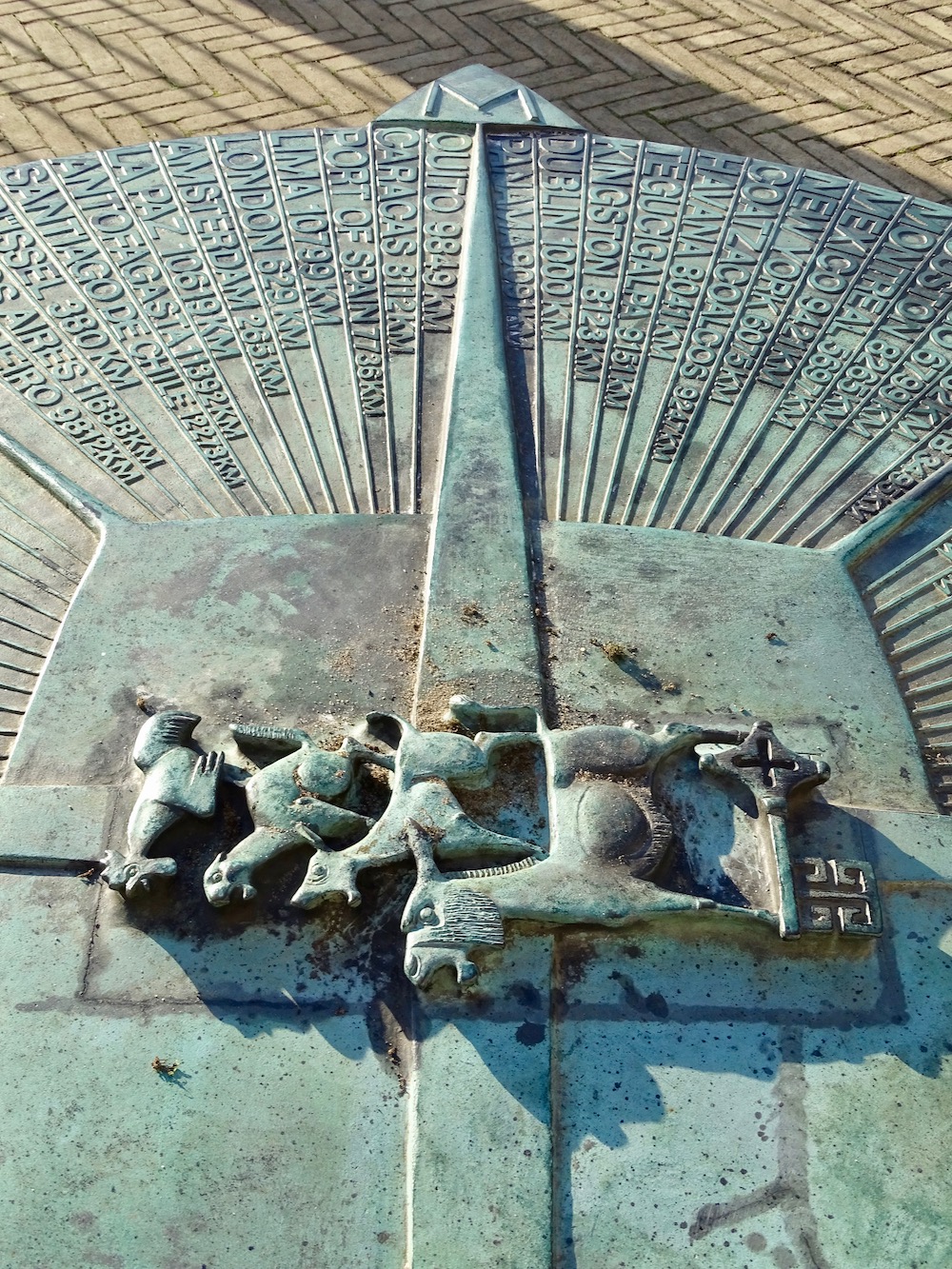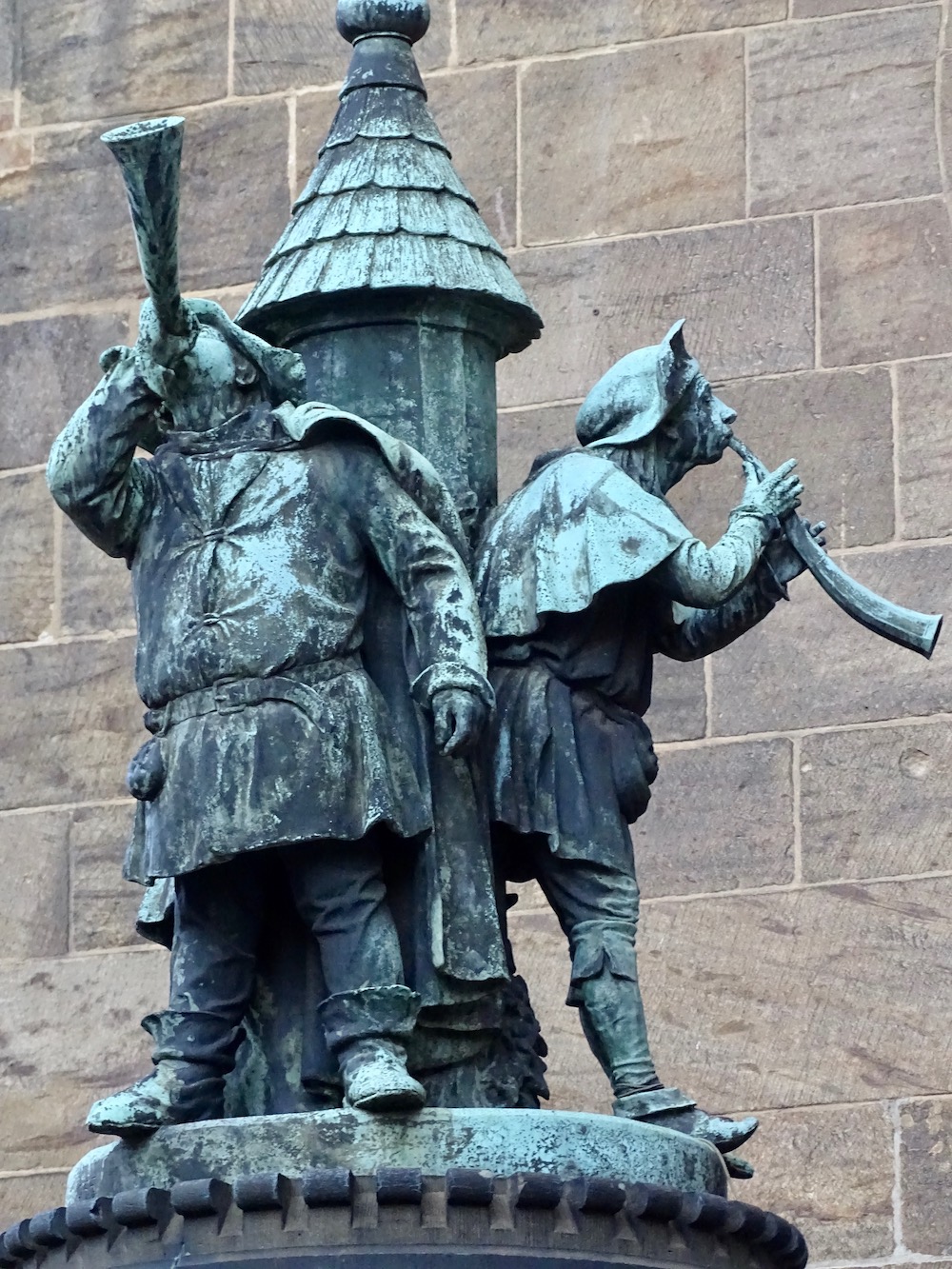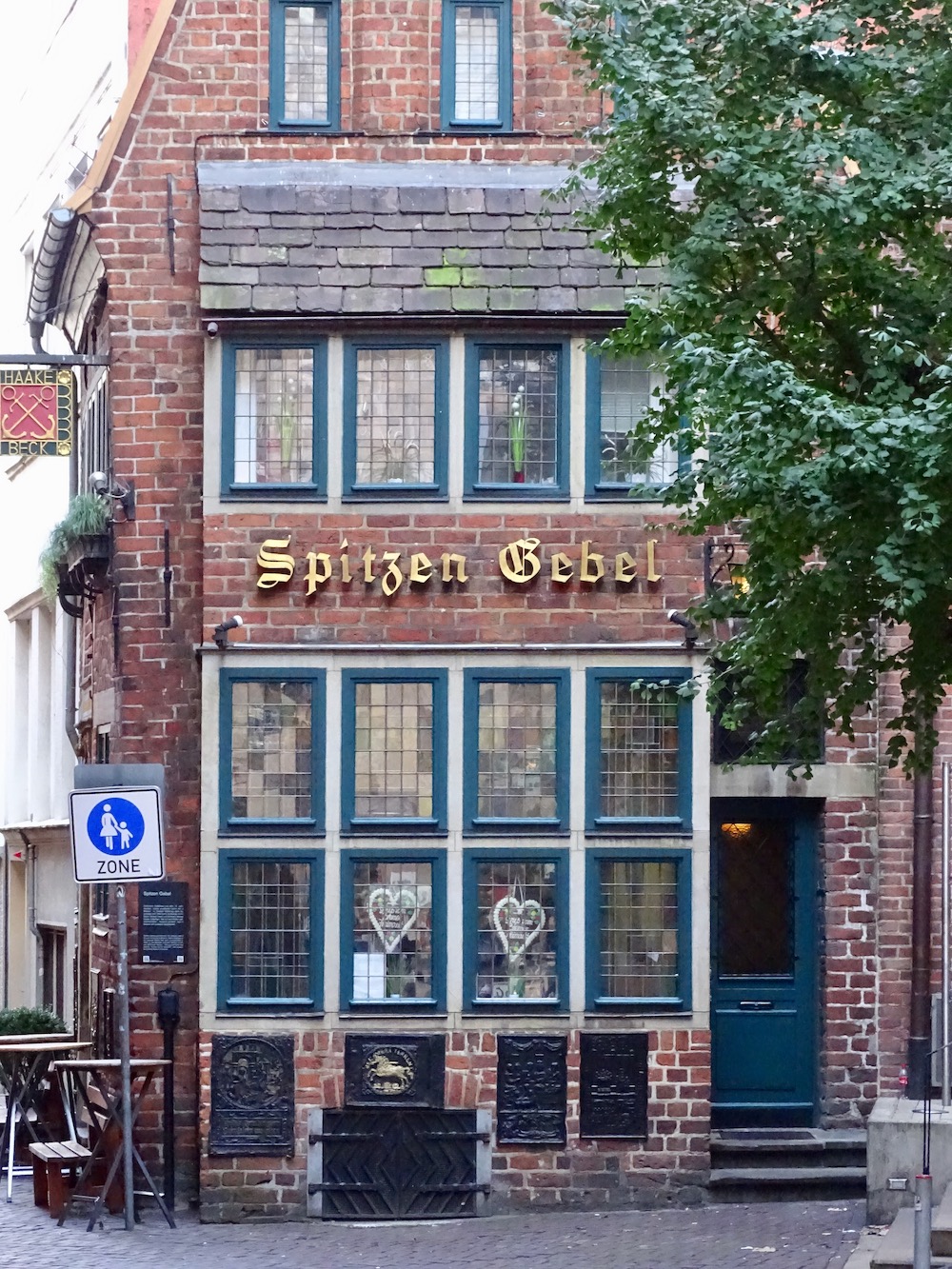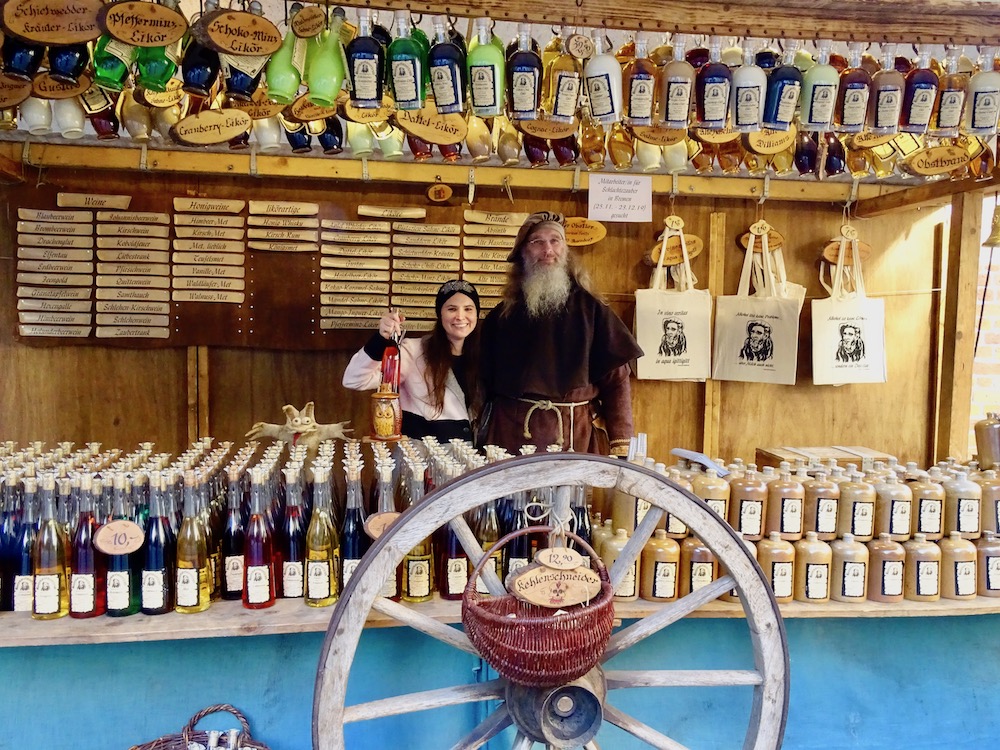Without a doubt, Bremen is one of the most beautiful cities in Germany. With 570,000 inhabitants, Bremen is the second largest in the north of the country, after Hamburg. It is easy to walk the center of this city that seems taken out of a fairy tale. Most tourist attractions are in a fairly small area. If you want to visit other places like Botanika, Rhododendron Park, Focke Museum or Universum you must go by public transport.
Booking.comWhat should I see in Bremen?
Böttcherstraße
‘Böttcher’ means wooden barrel; those who built them lived on this ‘straße’ or street in Bremen. On one side of the street was the Weser River and the market on the other. The ships arrived at the port and unloaded their merchandise in barrels that were the containers of the Medieval Era. Unfortunately, the river lost its flow and in the 1600s you could walk on it at low tide. This caused the port to move to Bremerhaven where we embarked on the Norwegian Encore Cruise. Barrel builders left chasing business.


His father owned a company that distributed coffee and died at age 55. The doctor told him it was because of the poison in the coffee and this gave him the idea of making decaffeinated coffee. The caffeine he removed was sold to pharmacies. He became super rich and by the end of the 1920s he had already bought all the houses on the street.
Glockenspiel
The ‘secret street’ of Böttcherstraße is made up of a 330-foot alley. Ludwig Roselius worked with a German sculptor named Bernhard Hoetger to change the facades of the houses. He was proud of his Nordic heritage and as a proponent of his supremacy, he was a follower of Hitler. Two of the facades carry images of Robinson Crusoe and the lost city of Atlantis.
However, the most impressive house is Glockenspiel. To listen to the music, you must visit before the hour changes between 12 and 6 p.m.


Pay attention to a turning panel showing images of Columbus, Leif Erickson and two famous German explorers. The purpose of the bells was to draw attention to the achievements of the explorers and their conquests over the natives who had their faces painted red.



The majority of Böttcherstraße was destroyed in 1944 during World War II. Today it is managed by a foundation and is one of the most tourist places in Bremen.
Bremen Bonbon Manufaktur
In an inner courtyard of Böttcherstraße you will find Bremen Bonbon Manufaktur. The store begins with the story of seven brothers who were innovative out of laziness. In front of it there is a fountain in commemoration of them.

Making candy by hand is something quite rare. Those who visit can see how they are done in a traditional way. The process includes cooking, pulling and cutting raw material. They have more than 100 flavors that range from sweet to sour. The colors of the pills also vary greatly. You can try them and also buy them, as they are the perfect gift.
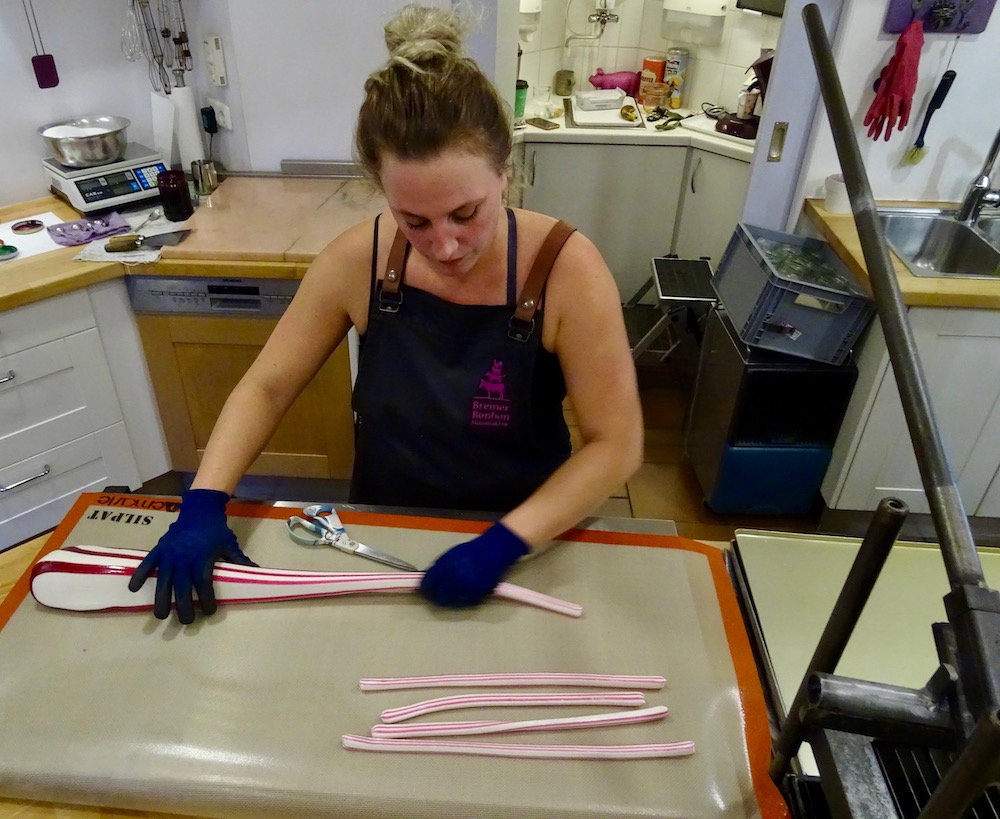

Feines 1783
Bremen is known as the city of short ways. The Feines 1783 Restaurant in Marktplatz is a perfect example of this. It was the first coffee shop in Germany, even before Austria. But they also served beer and wine. Those who misbehaved could be taken to jail by a direct entry into the same building. Originally it was a men’s club and therefore women could not enter until 2002.

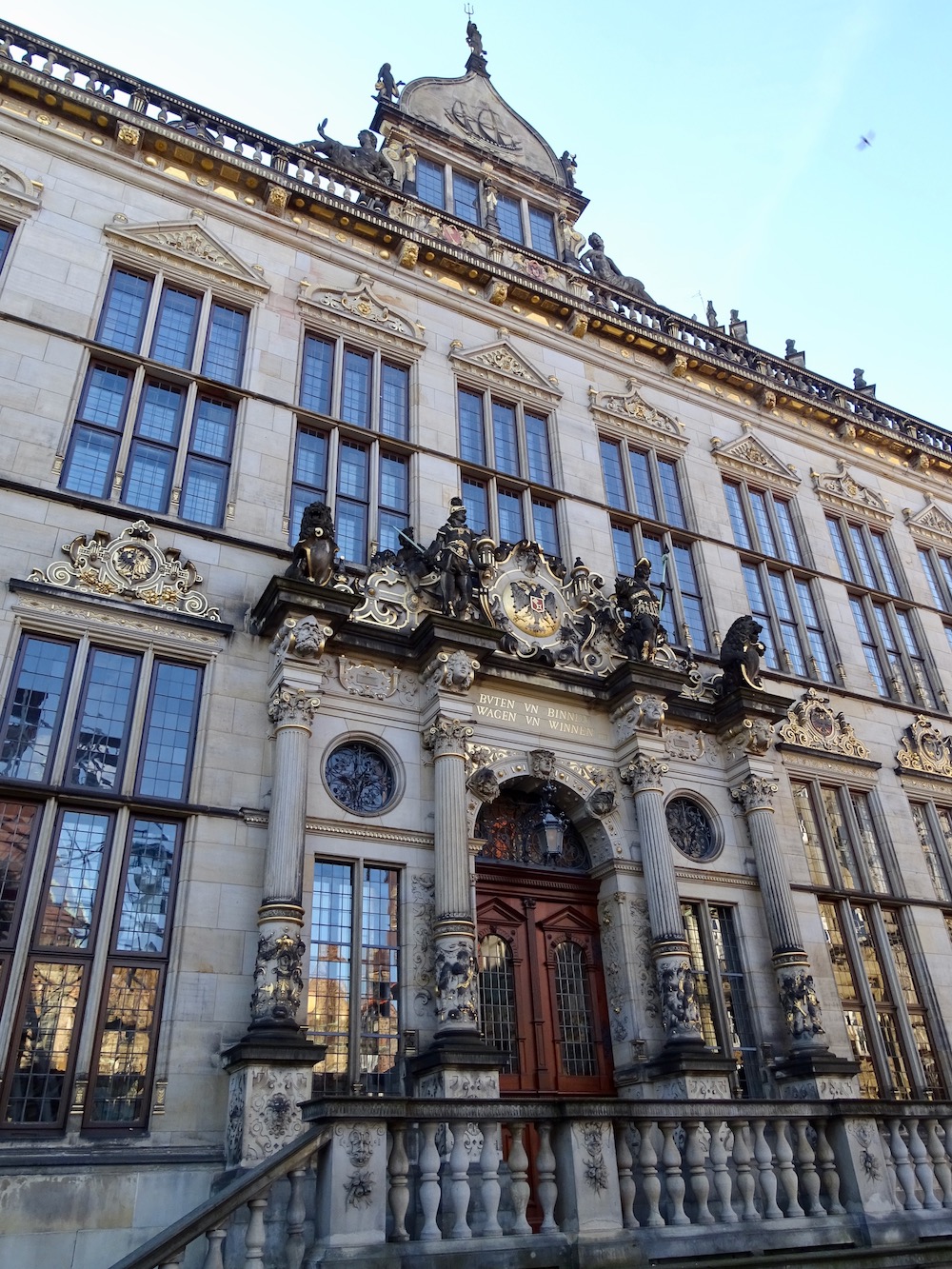
Hole of Bremen
Our guide took us to the Bremen hole that looks like a normal man’s hole. In its center it has an opening and three coins. Actually, it is an underground donations box that is in Marketplace in front of the Parliament. The location was selected because Bremen’s musicians has an underground wine cellar. As it is a little difficult to find people usually deposit funds in wrong places.

When you deposit a coin you can hear the sound of one of the four animals of the Town Musicians of Bremen. They collect about €17,000 annually. In high season they must empty the container weekly and in the low as once or twice a month. The funds go to the Wilhelm Kaisen Charity, which provides financing to local projects.
Town Musicians of Bremen
In 1819, the Grimm brothers created a fairytale book that included Bremen musicians. The story tells the story of a donkey that could no longer carry bags. He heard that the farmer was planning to get rid of him. So, he decided to escape to Bremen (which was known for being a free site) to be a musician. In addition, he convinced a dog, cat and rooster to accompany him.
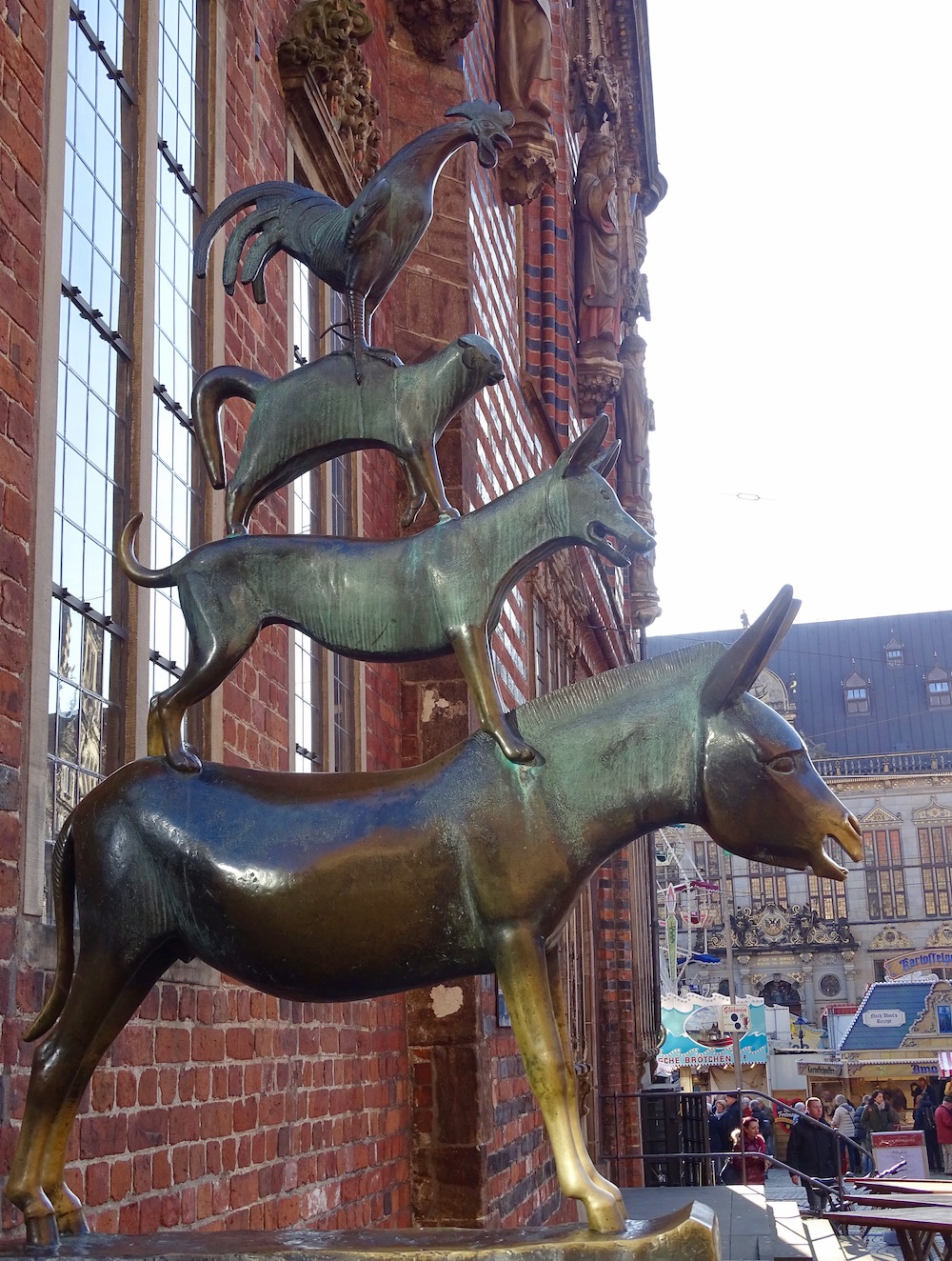
As they were old and slow they got tired on the road and saw a house of a band of thieves. They decided to climb on top of each other to look like a scary creature and scare them. The goal was achieved and they kept the house full of food. Two morals of the story are that it is better to work as a team and it is never too late to start over.
Find the statue of Bremen’s musicians when you visit. They say it’s good luck to grab both donkey’s legs and make a wish.
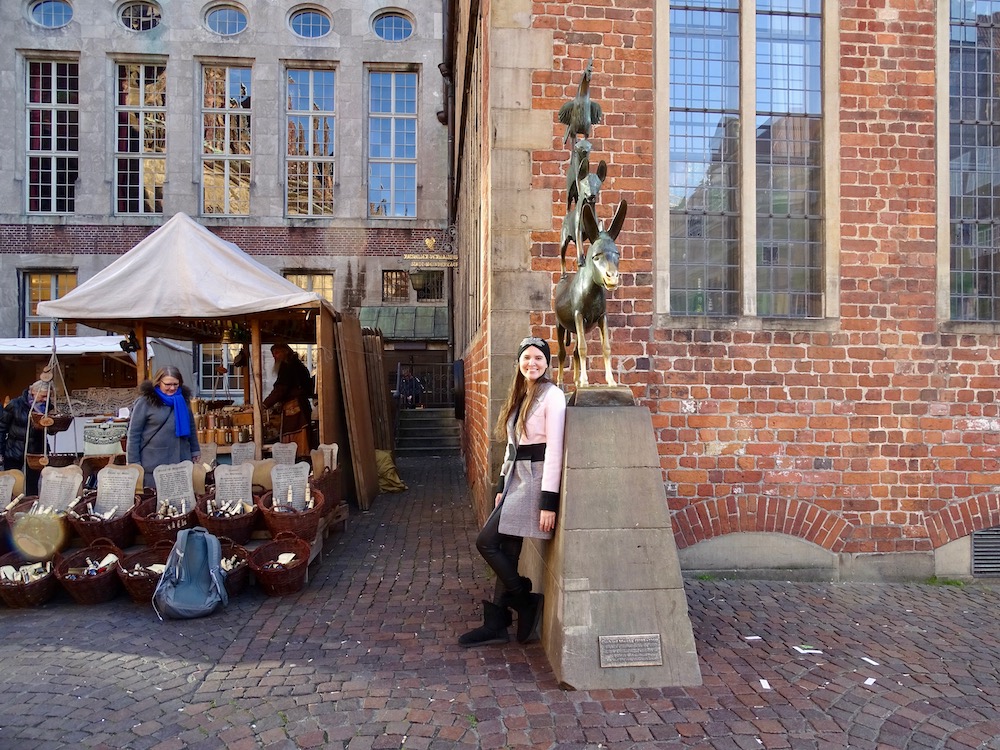

Marktplatz
The Marktplatz market is almost 1,000 years old, being the oldest in Germany. It covers an area of 37,500 square feet (3,484 square meters) in a public square. Parts of this market date from the times of Charlemagne. Originally it had a part by the Balge River, which is a tributary of Wesse, but the area was too low to have buildings. It really started to matter when they built Bremen City Hall between 1,405 and 1,410. There were seven entrances that had to be traveled by vehicle so that people could sell their products in the square. Then they removed these walls and the market continued until the middle of the 20th century when it began to lose importance.
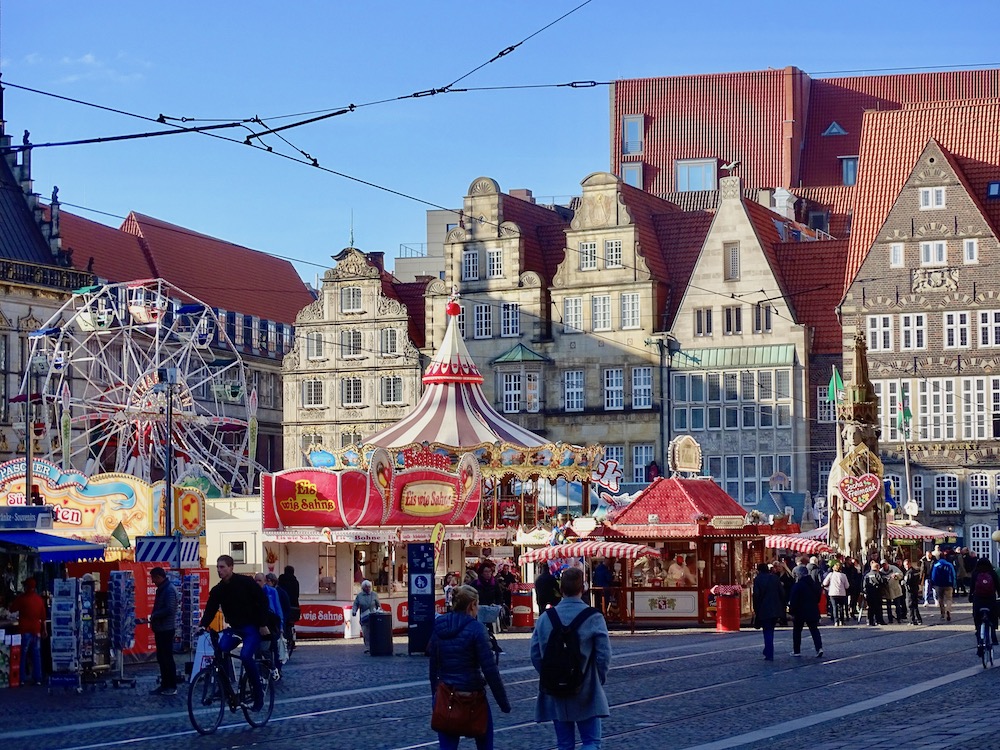



Freimarkt
By coincidence I went to Bremen during Freimarkt. Since 888 King Arnulf gave the archbishop of Bremen a power to coin his currency, market rights and the right to collect tolls. In 1,025 Emperor Conrad II confirmed a right to establish a market originally acquired in 966. The first documented date of Freimarkt was October 16, 1,035. Bremen could hold the fair twice a year, a tradition that continues every fall and spring.
In the beginning, the market was mainly for people to sell their products. People came to buy crops to prepare for winter. Since the 17th century novelties began to arrive little by little, including exotic animals such as bears, dromedaries and monkeys. It became a circus attracting humans who had strange talents.

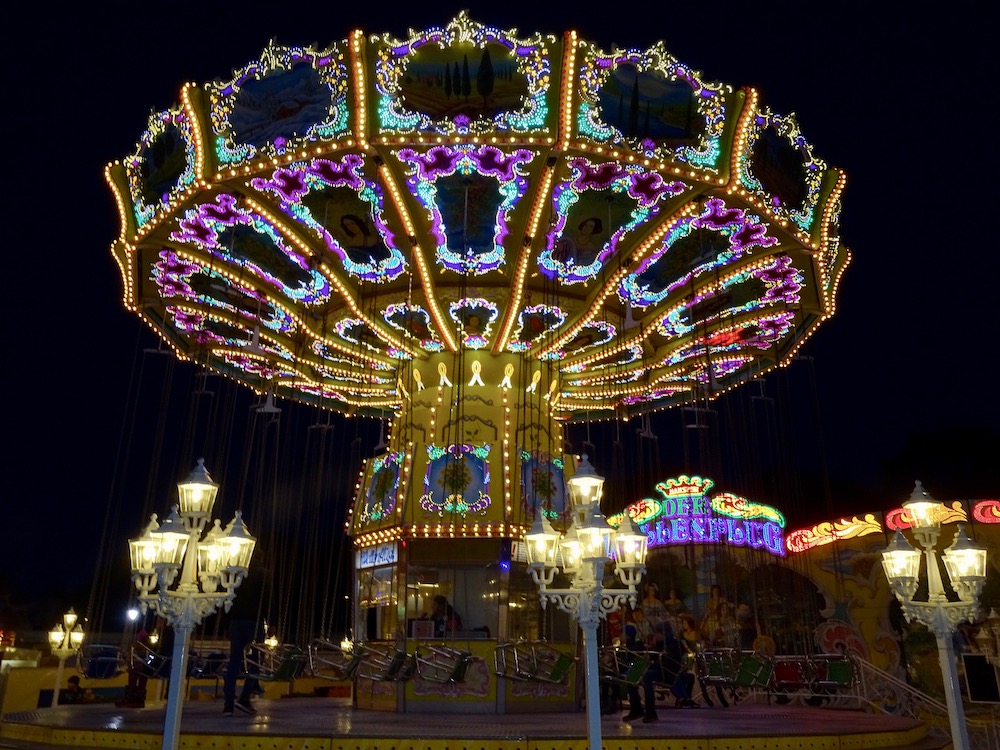
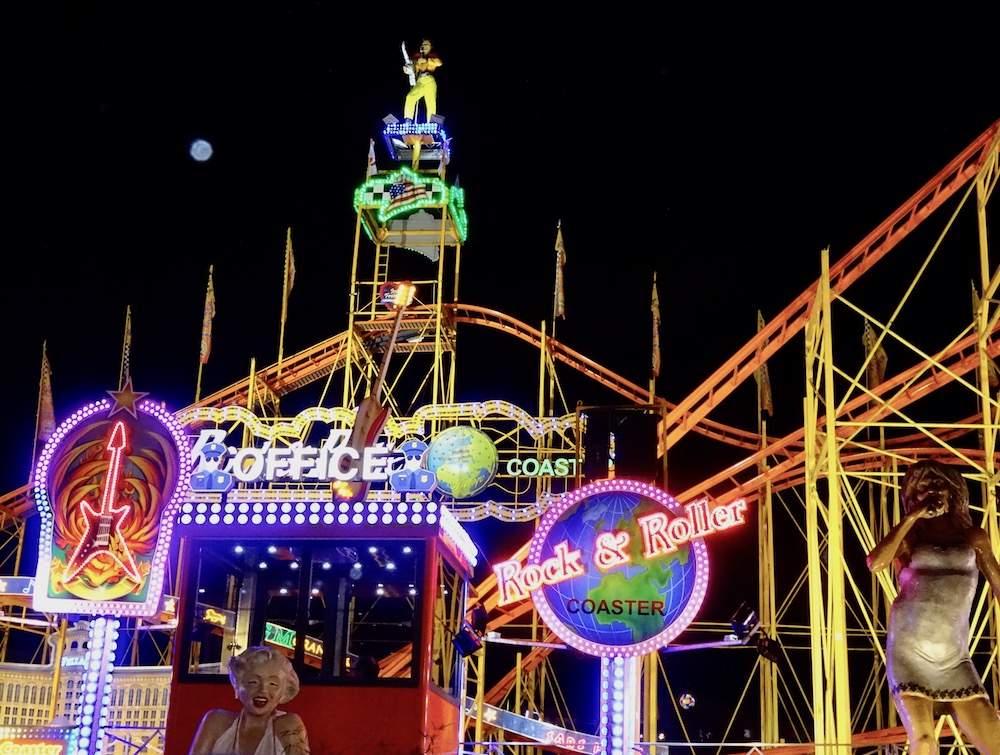
Since 1,809 it began to be a fun fair with food and games. During World War II the Freimarkt was stopped for almost 10 years. Today it is one of the most popular fairs in Germany, attracting four million people. The Freimarkt is celebrated at Marktplatz and at the train station.
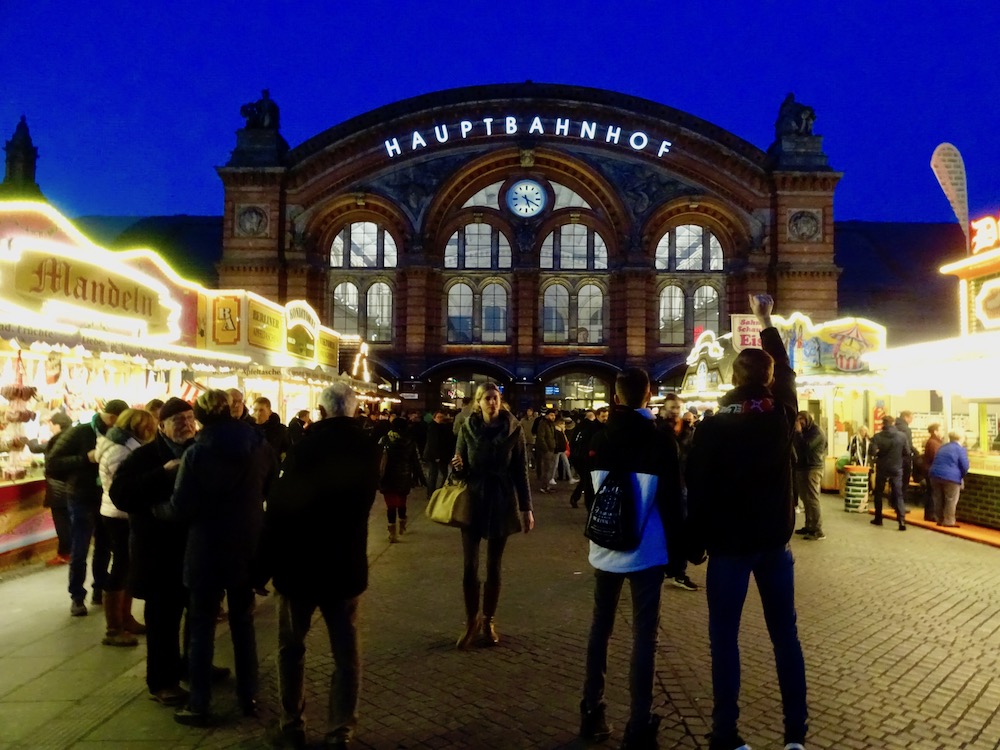
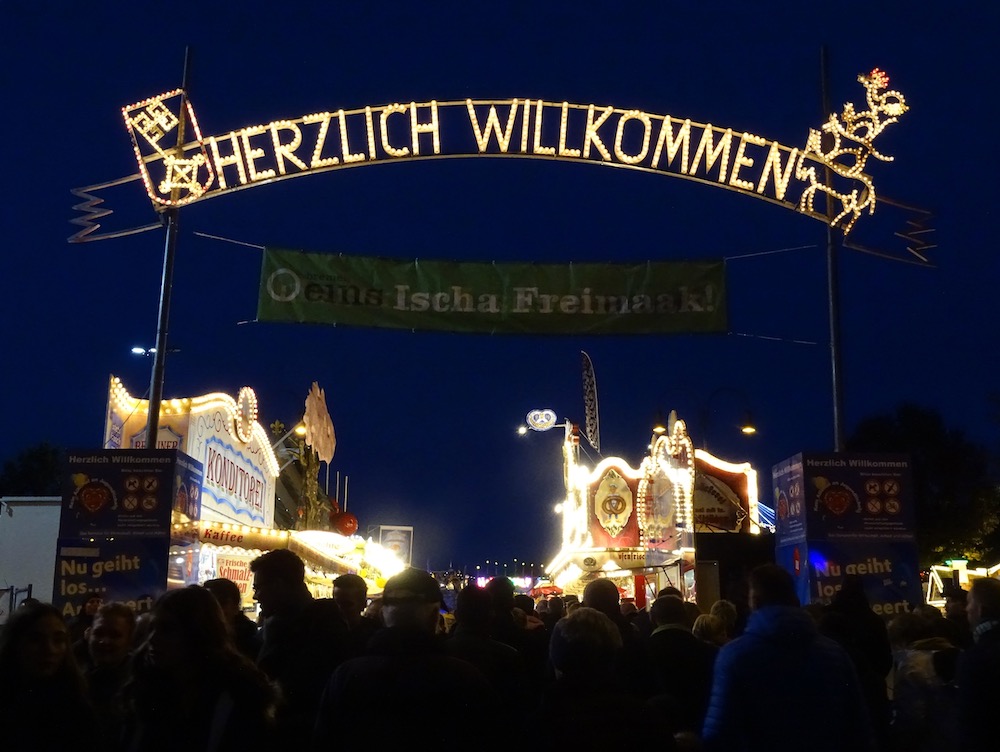
I went without a cell phone signal thinking that I could find my friends, having no idea how big it was. You must cross the train station to reach 100,000 square meters of fun. I lost hope of finding them after touring hundreds of places that included mechanical games and food. I saw the famous Berliner donuts that reminded me of John F. Kennedy‘s speech “Ich bin ein Berliner!” … I also took the opportunity to eat a currywurst.
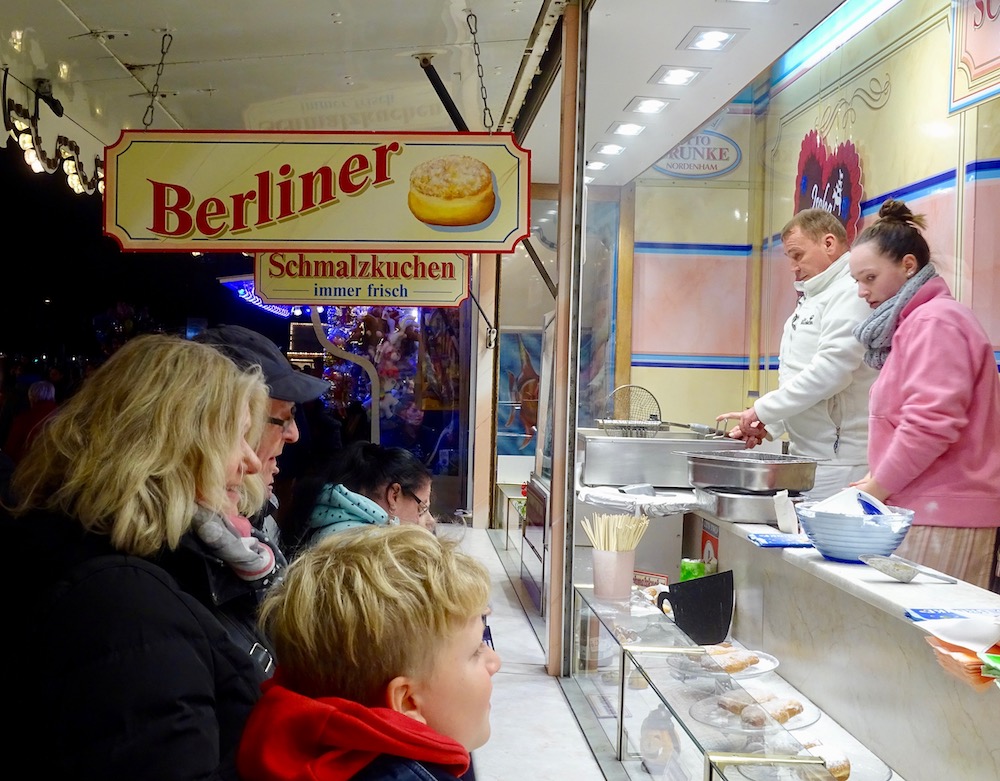
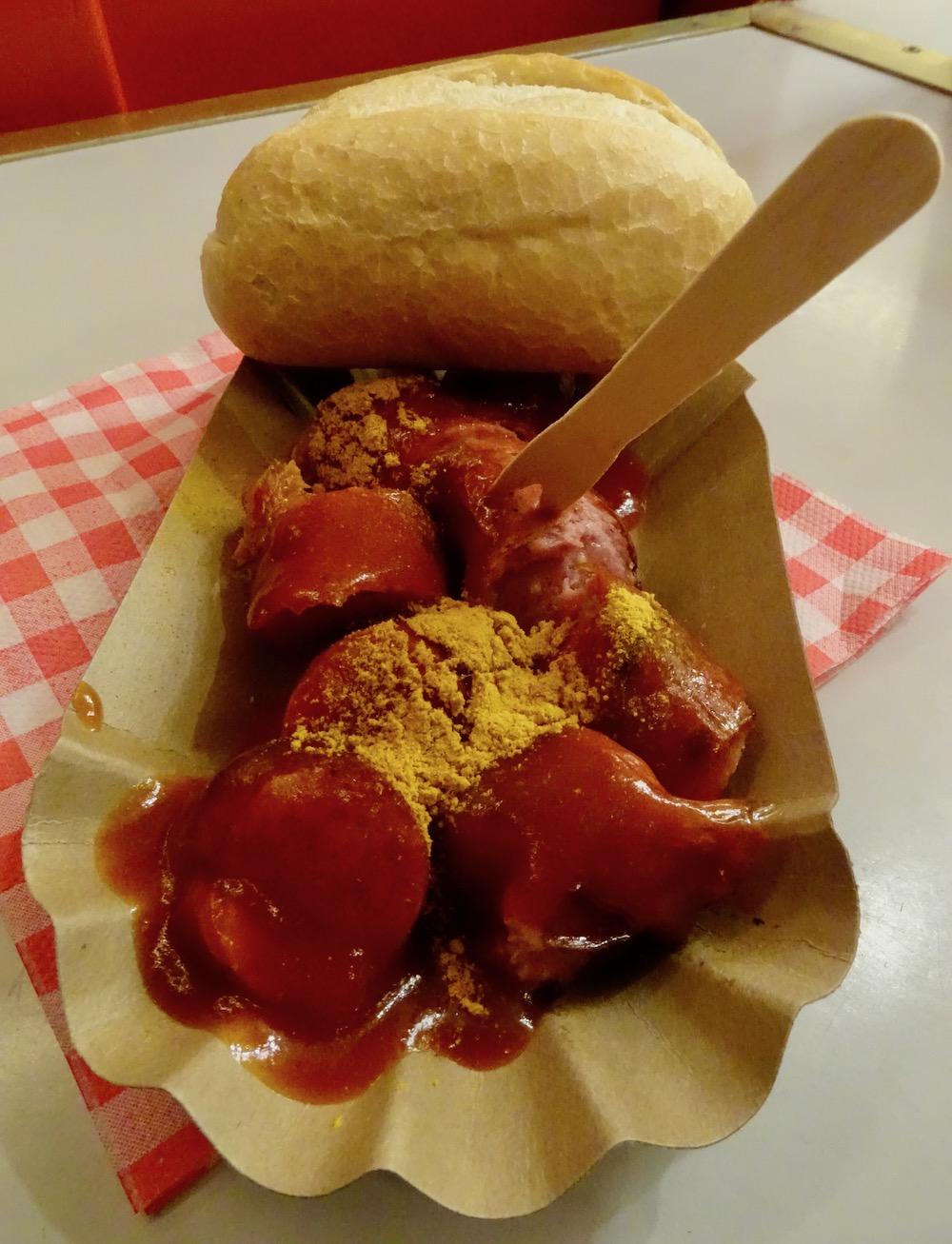
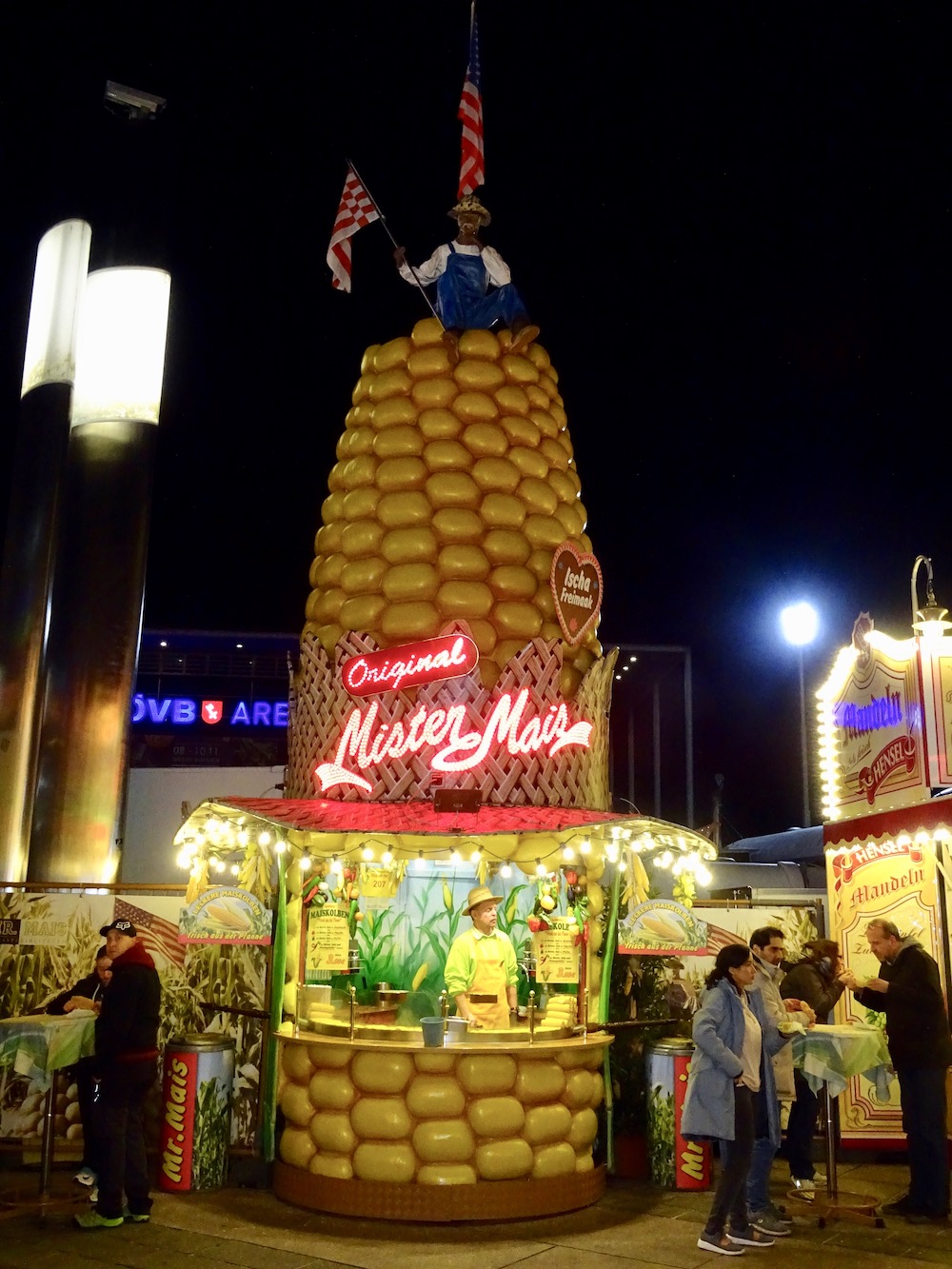
I stopped at a stand to try the famous ‘glühwein’ which is a mulled wine. I was at -2 degrees when I went to Bremen so it felt like glory. The only bad thing about Freimarkt is that no stand accepts a credit card, therefore, all payments must be in cash.



Bremen Town Hall
Bremen City Hall has been a UNESCO World Heritage Site since 2004. This iconic building stands out in Marktplatz for its Gothic style built in the early 15th century. In the 17th century it was renovated in a Weser Renaissance style. It is the only European town hall built in the late Middle Ages. It was not destroyed or altered, managing to survive in its original form over the centuries. 70% of the city of Bremen was destroyed in World War II, but miraculously the town hall remained intact.

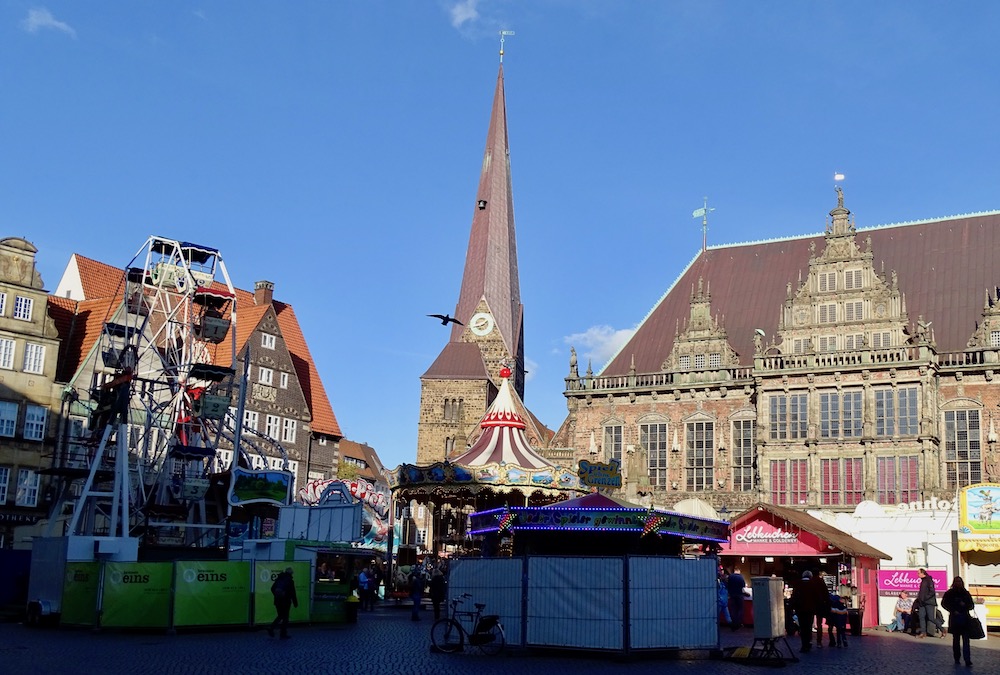
The ground floor is formed by a large room with oak pillars that served merchants and theatrical performances. The upper floor has the main party hall that was where the municipal council met. It has models of ships hanging on the roof representing the importance of maritime trade. At the beginning of the 20th century it was decided to extend the building. A contest was made that was won by the architect Gabriel von Seidl. The new building is much more modern but looks good next to the old one.
Bremen Ratskeller
Below Bremen City Hall is Bremen Ratskeller. This wine cellar is the largest in all of Germany. For more than 600 years it has been home to some 650 German wines. Today it is a restaurant and can be visited on guided tours. Part of it is an underground bunker, which is for sale according to our guide. It has an emergency exit on a bench next to spuckstein. They held underground parties for a while but they stopped doing so because the bunker has direct access to the banks that are in the area.
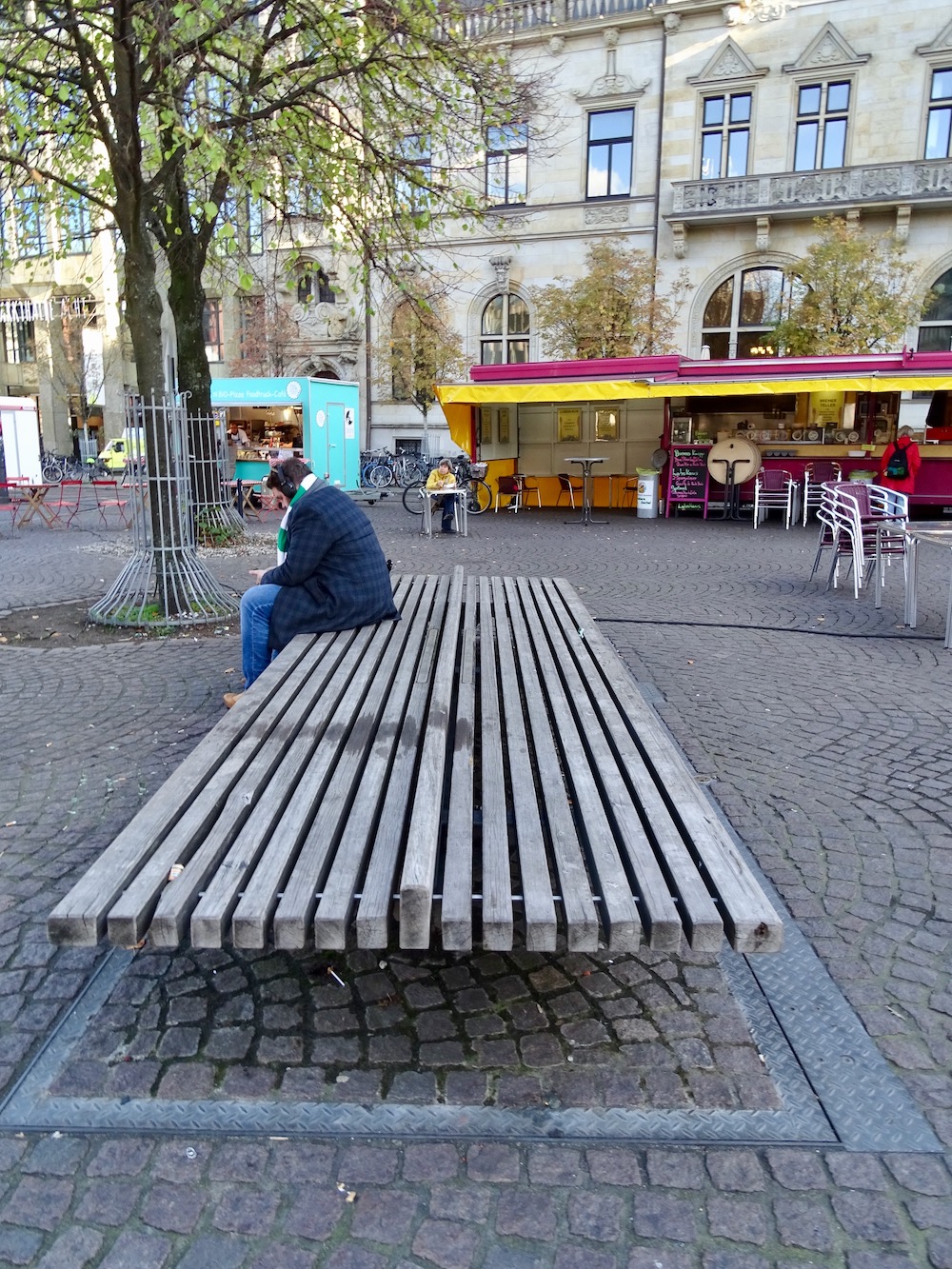

Bremen Ratskeller houses the oldest wine barrel in Germany. It is known as ‘rose wine’ for the decoration of the cellar that has a rose painted on the ceiling. This wine, which is not rosé, dates from 1,635 and tastes like sherry due to its age. Only the mayor and the cellar master could taste it before the site was declared world heritage. The last person to taste it was Queen Elizabeth II of Great Britain when she visited Bremen in 1978.
Roland Statue
Bremen received its UNESCO World Heritage status for being “an exceptional testimony of autonomy and civic sovereignty.” The designation is shared between the Bremen City Hall and the Roland Statue.
The official name of Bremen is the free Hanseatic city of Bremen. This name was assumed in 1,806 when the Holy Roman Empire was losing its importance. But since 1,646 they had these privileges, which they had previously enjoyed in 1,186. Bremen was the oldest autonomous republic in Germany. It joined the German Confederation in 1,815 and the German Empire in 1,871.
Roland was a companion of Charlemagne who died in a church war against Muslims. His song became popular throughout Europe. Roland represented the free rights of people at a time when the church had a lot of power, which was not accepted by the people of Bremen. The statue of Roland was put in 1,404. It is considered the oldest Roland statue that still exists. Over the years it has been restored and repaired many times, replacing part of the original material. It is said that there is a second statue of Roland hidden in the Bremen Town Hall in case it should be replaced. When I went to Bremen it was Freimarkt and they had the statue decorated.
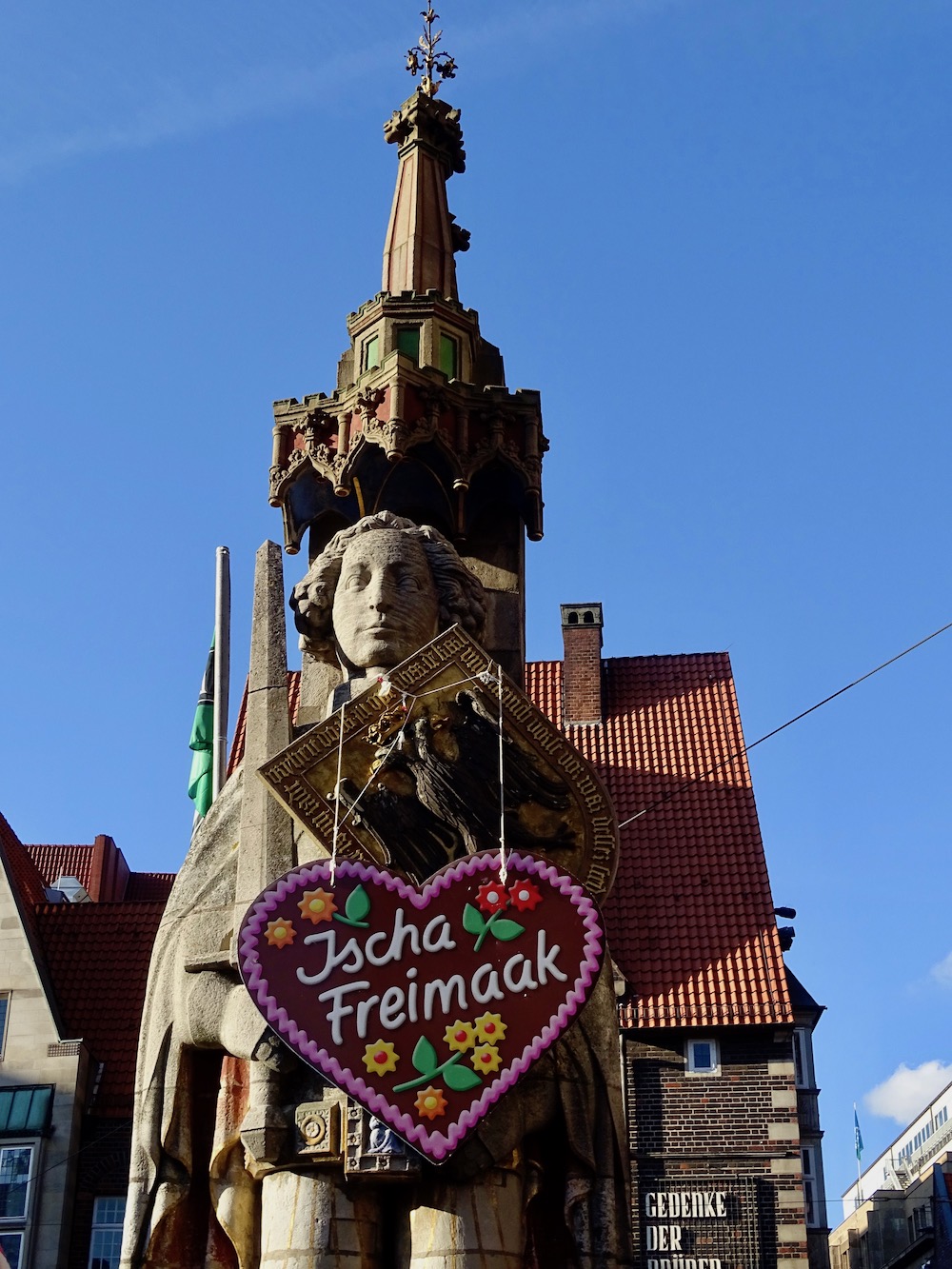

Bremen Cathedral
Bremen was built on a sand dune by the river. The Cathedral of Bremen was built at 11 meters above sea level. They chose the highest point to prevent flooding. In 782, Charlemagne charged Saint Willehad with the task of converting residents. He did not achieve his goal and one member of his delegation was killed. He returned again and accomplished his mission. setting up the church in 789 and becoming the first bishop of Bremen.
The Bremen Cathedral was dedicated to St. Peter who is the patron of the city. One of his keys to heaven can be seen on all flags.
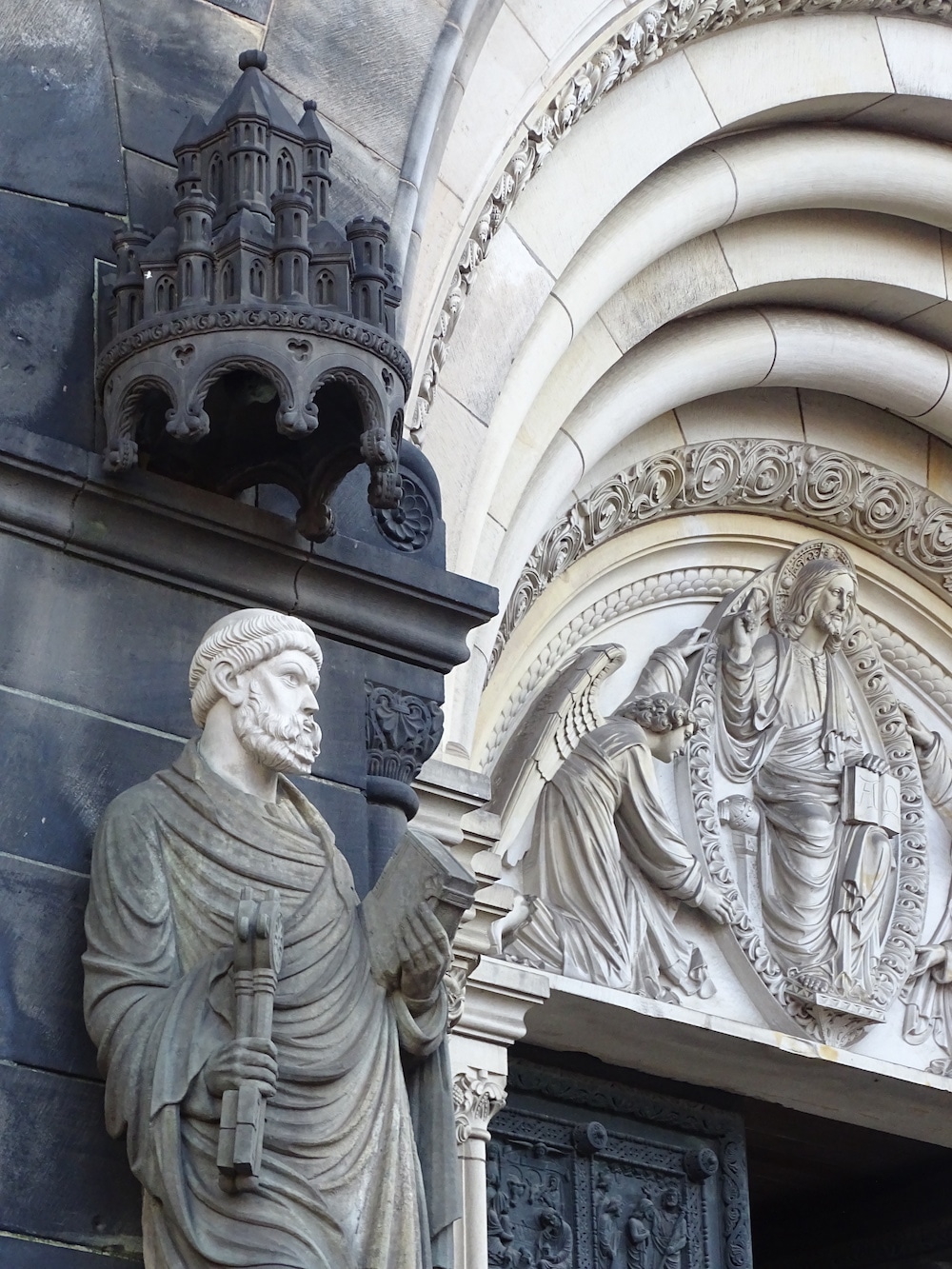
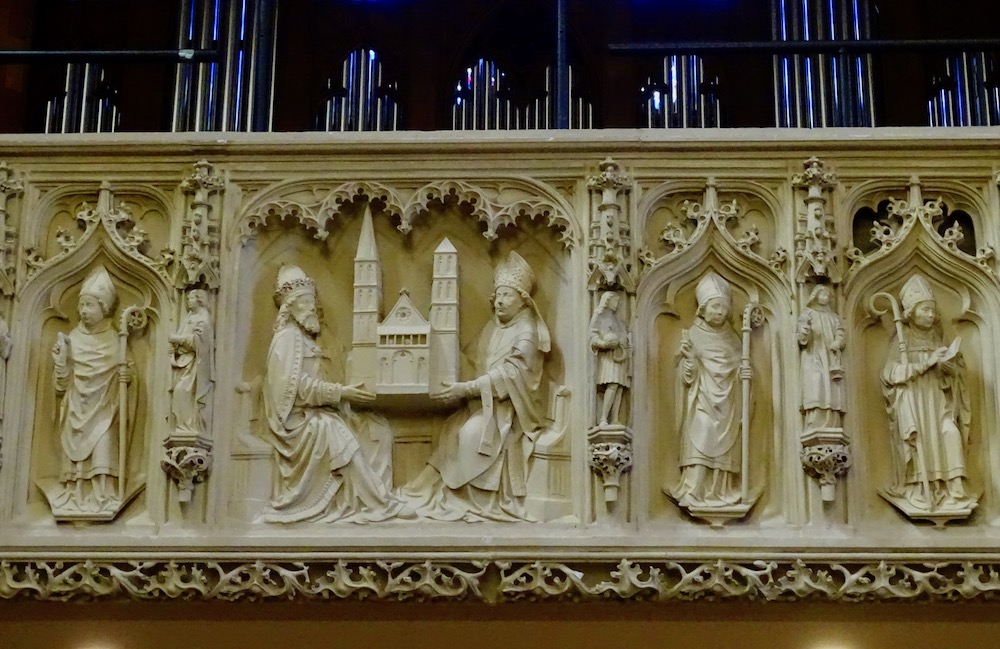
The oldest parts of the current structure is the western crypt and the vaults above the main organ. Originally it was a Catholic church but it became Protestant in 1,522 when the Protestant Reformation arrived in northern Germany. The cathedral was run by Hannover and Sweden falling into oblivion.
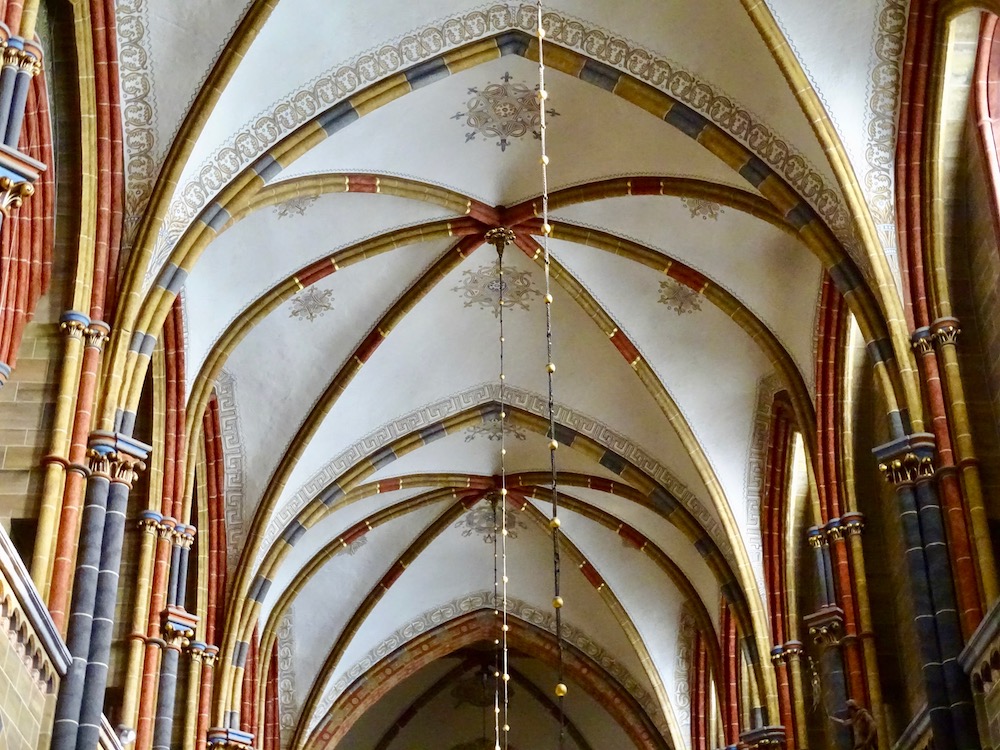

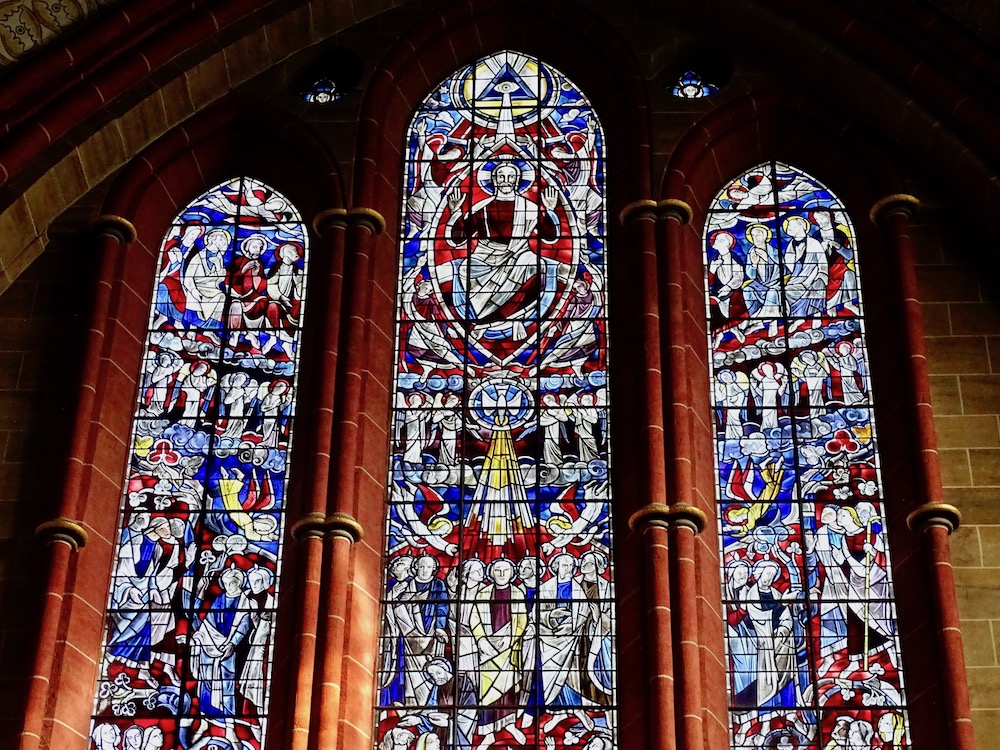
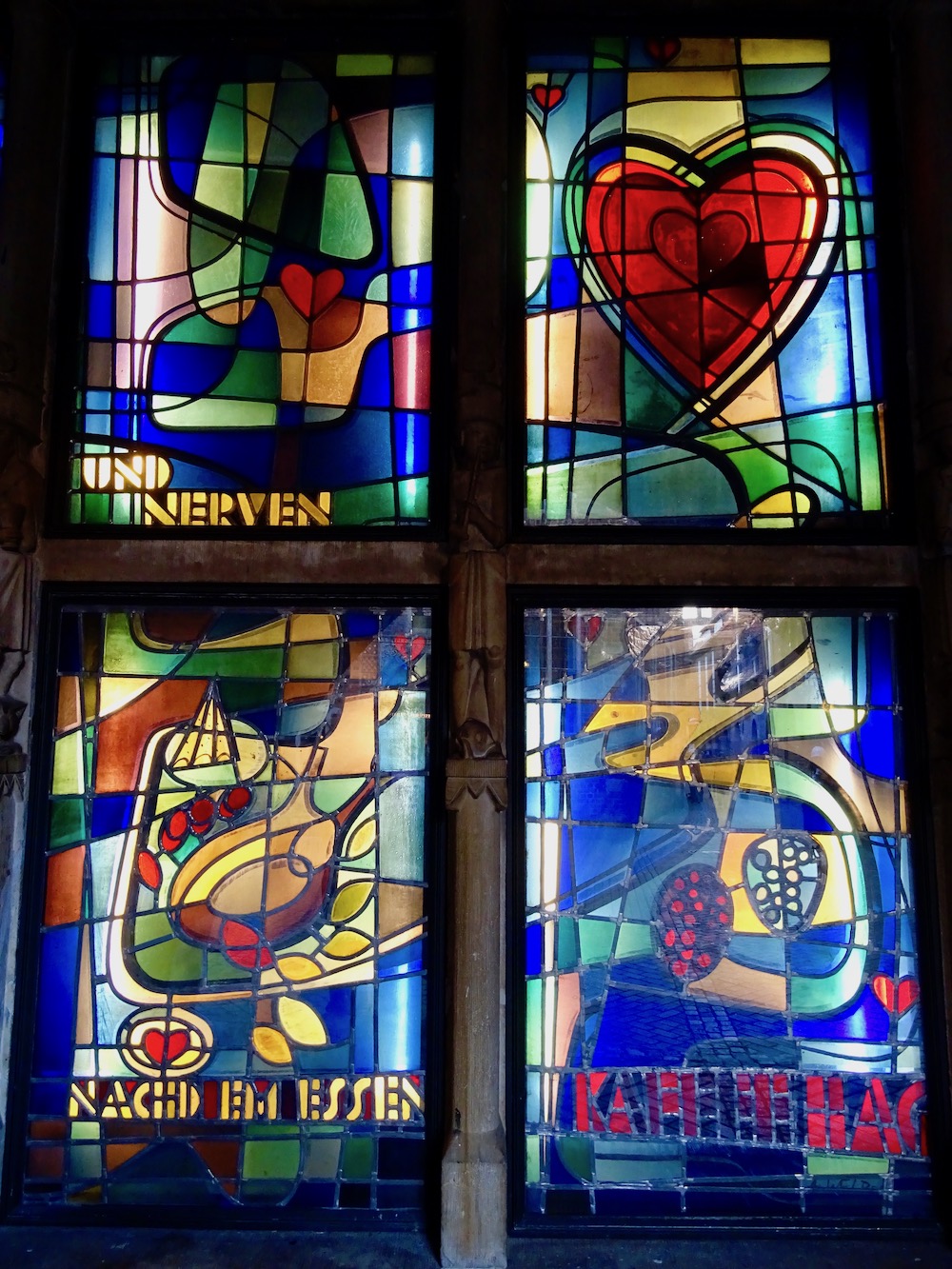
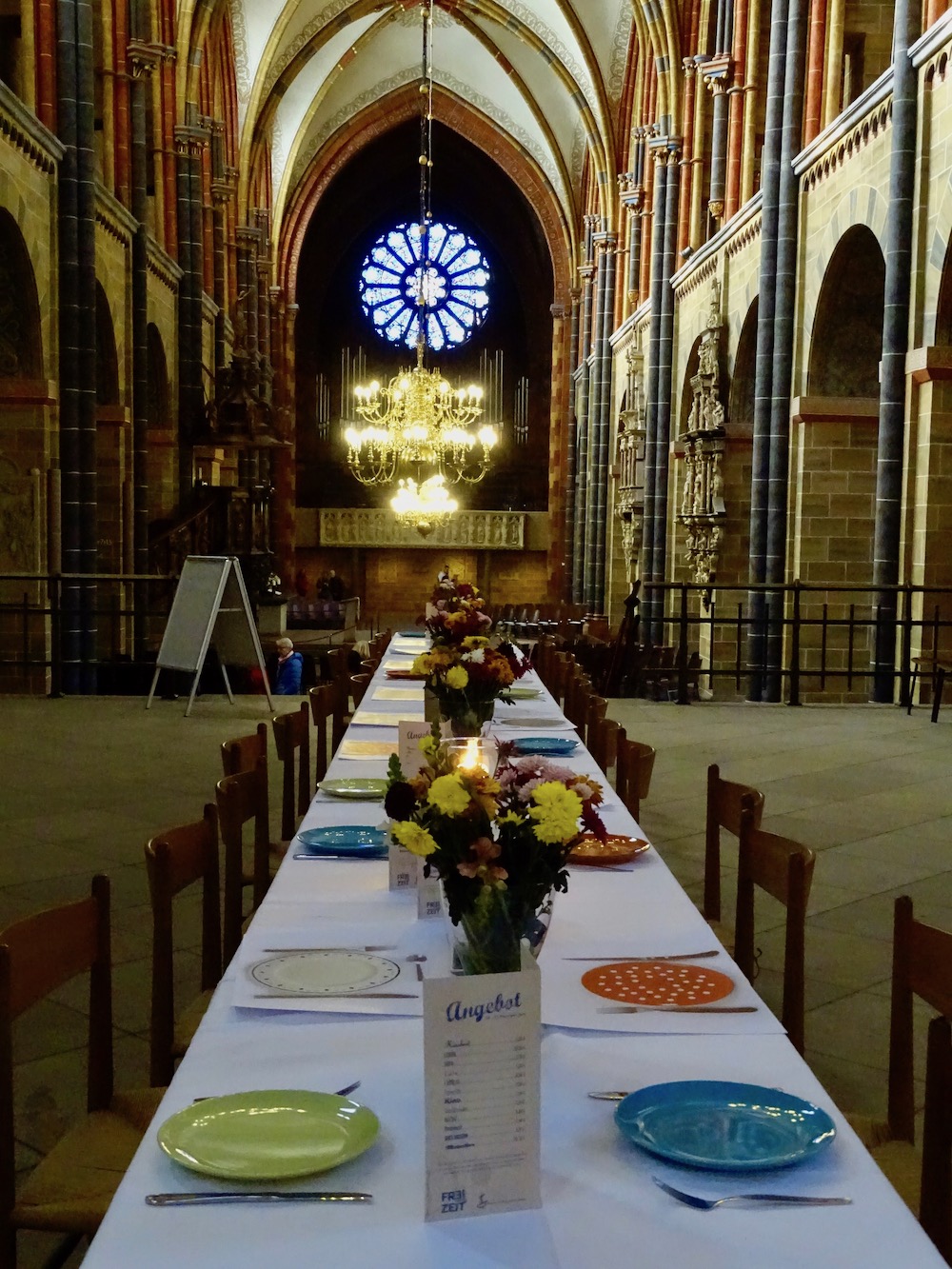
Renovations
The last major change of the Bremen Cathedral was in the 1,880s. This is due to Franz Schütte, another businessman, who invented the steel tank for oil. Before oil was transported in wooden barrels to Germany. Franz took his ship to the United States and filled it with oil to return to Germany. The Americans were afraid of him and bombs were thrown at his ship as it passed under the Brooklyn Bridge. He founded the ESSO gas station with Rockefeller. As an admirer of Cologne Cathedral, he wanted a similar one in his town. He told the locals that they did raise funds he would put the other part. The towers of Bremen’s Cathedral were raised to a height of 100 meters (328 feet). You can climb to the top to appreciate beautiful views of the city.

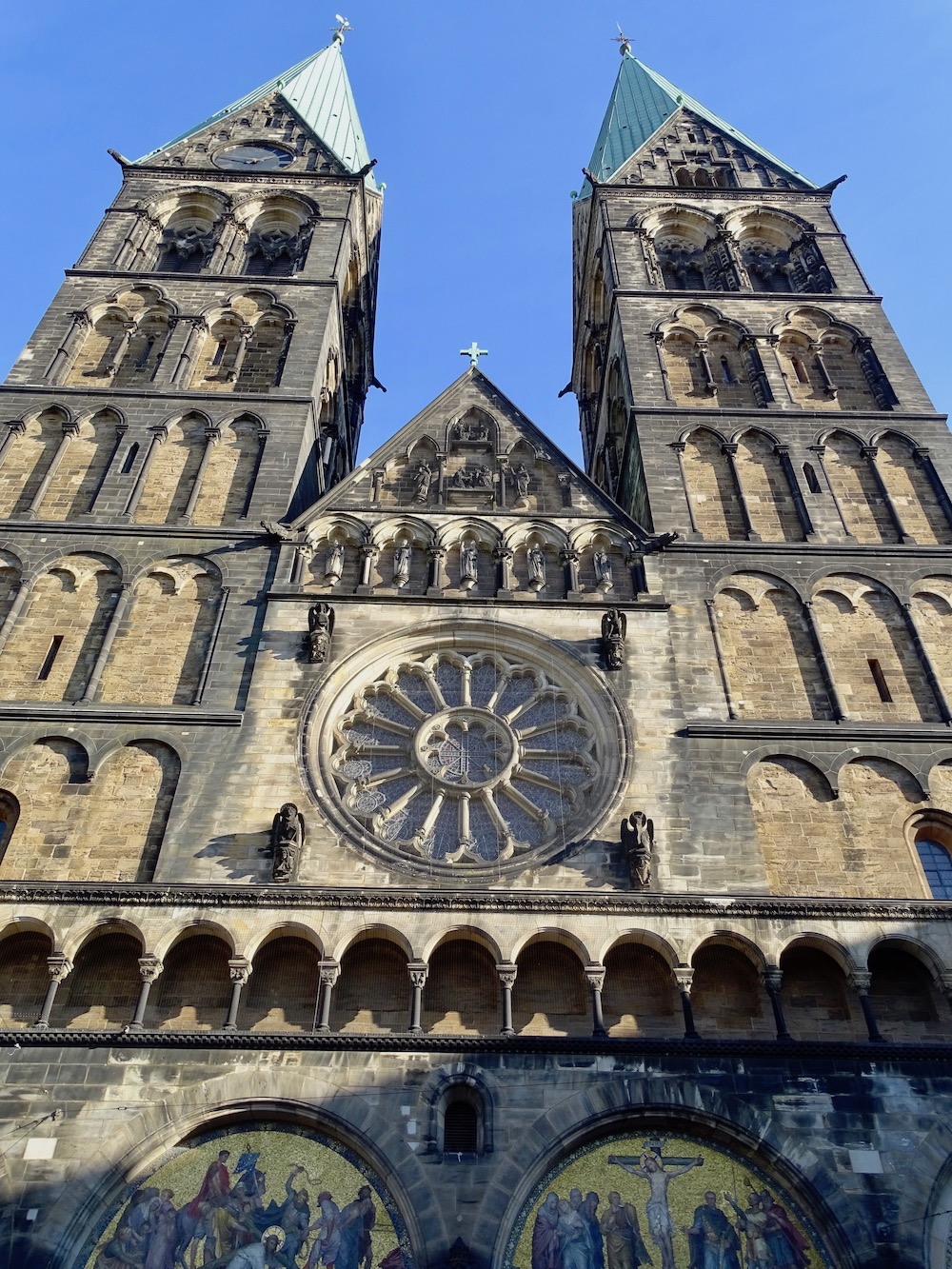
A curious thing that our guide pointed out was a mouse hidden in a door of the 11th century. Originally it was an entrance, therefore it was outside the Cathedral of Bremen. The church says that the mouse means that evil must not enter. But our guide believes that it is a symbol of church builders in the Medieval Era, since there are others similar in Gerona, Spain; France and Italy
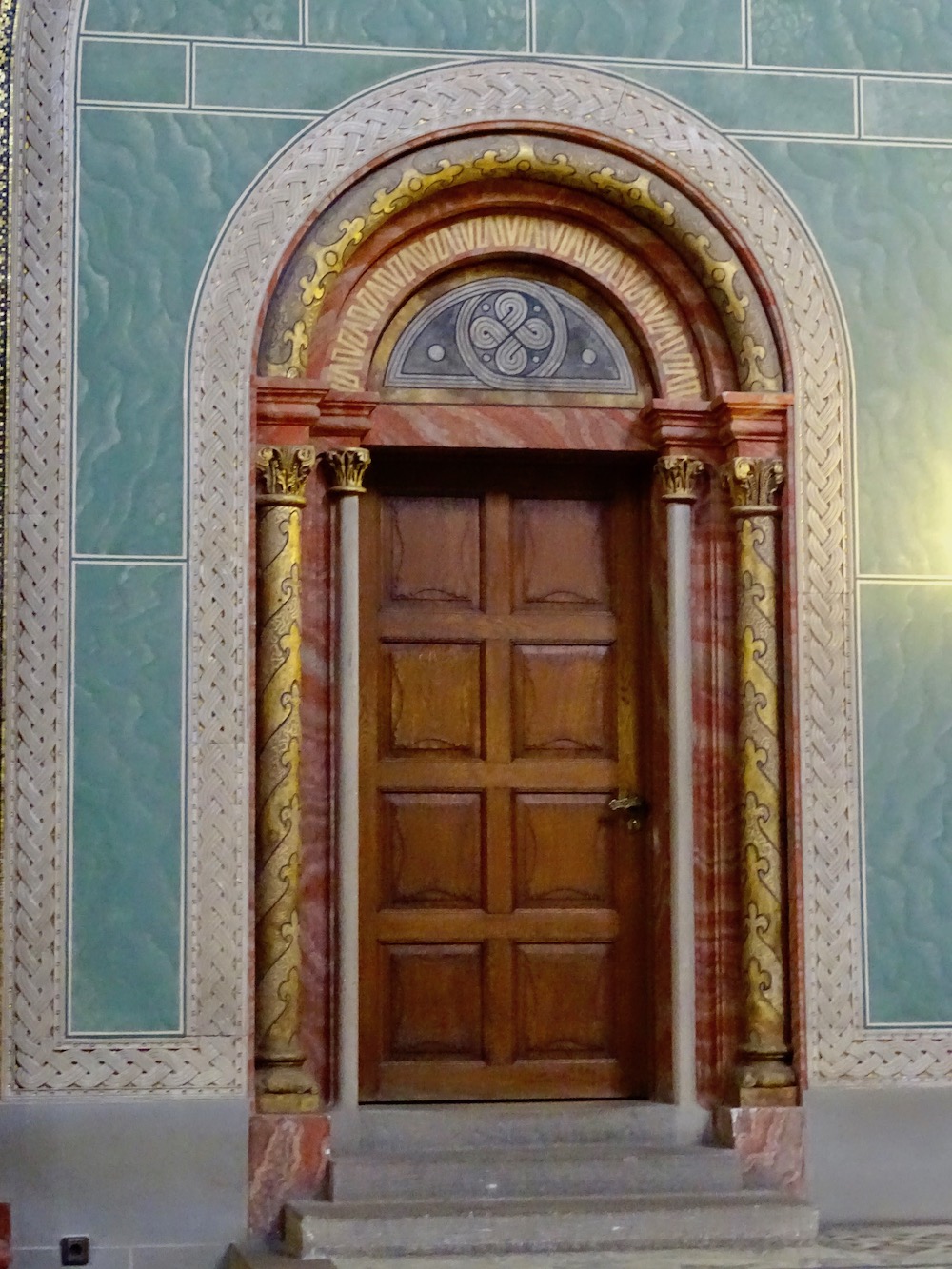

Bleikeller
When you leave the Cathedral of Bremen you will reach an inner courtyard where you will find an underground crypt. To enter you must pay a little more than one euro. ‘Bleikeller’ means lead basement in German. Originally, the roofs of the cathedral were covered with lead. Since they had to be constantly repaired, they stored a large amount of lead in the basement.


At the end of the 17th century, Arp Schnitger was asked to make organs for the church in the basement. He found boxes that he thought contained treasures, but he had never expected to find eight mummies. Some date 400 years back. You can see who they were since each one has its description. Several were Swedes including the last administrator of the cathedral and his wife, apart from two soldiers.

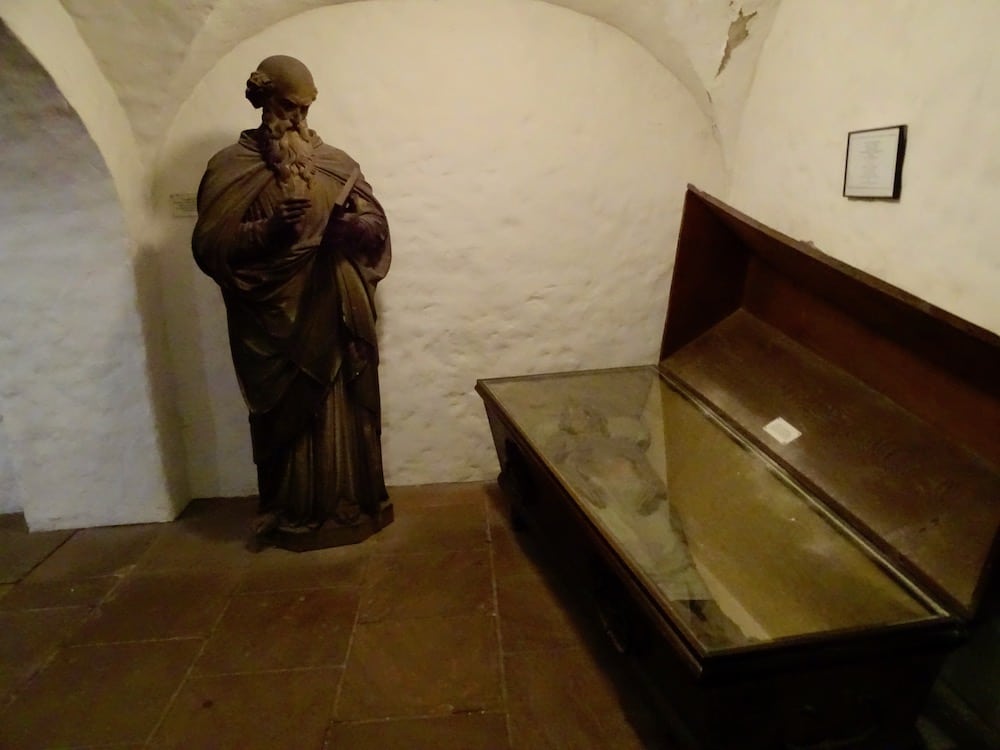
For a long time it was thought that lead caused mummification. But then it was discovered that it was because of the sand of the dune which allowed air to circulate in the room, removing moisture. The mummies look the same as those in Egypt if you remove the bands. They could be touched up to 1,970 but people began to take fingers as souvenirs. An American soldier took a finger and sent it back two years later because he said he had bad luck. Bleikeller is closed in the winter, if you want to visit you must do so between May and October.
Spuckstein Gesche Gottfried
‘Spuckstein’ means spitting stone in German. This stone is where the last public execution of Bremen occurred. Gesche Gottfried was a serial killer who was sentenced to death in 1,831 on her 43rd birthday. 35,000 people arrived to see how her head rolled to the point that is now the Spuckstein.
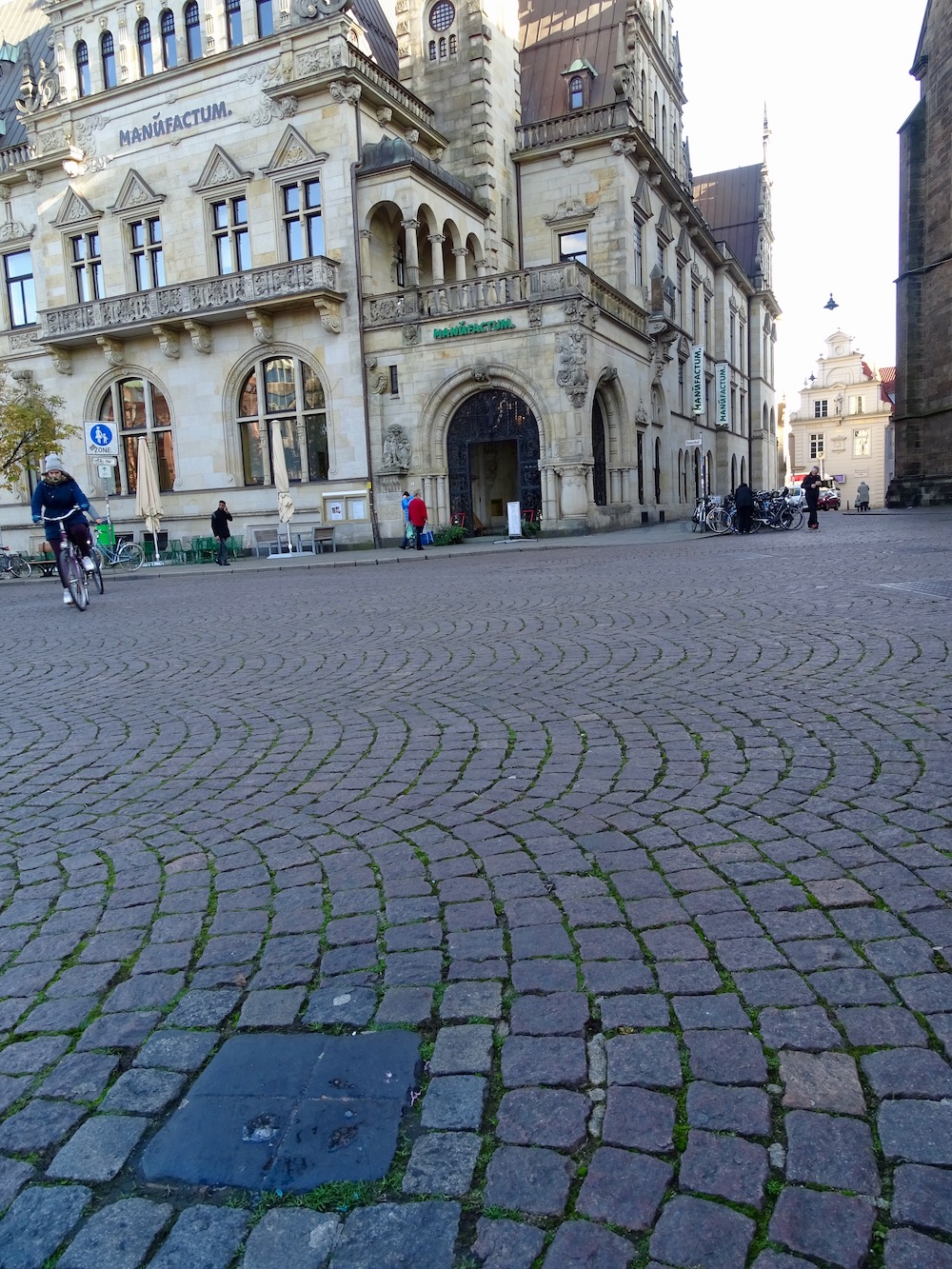
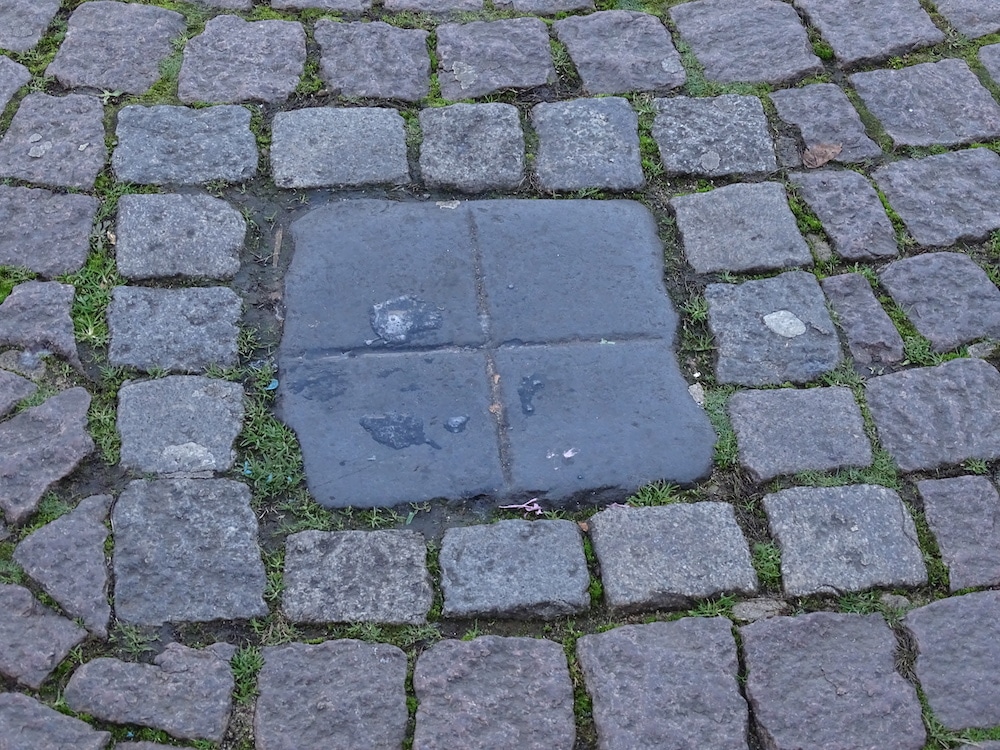
When she was a girl she saw a rat die after eating a piece of bread. She used ‘Mäusebutter’ which was butter with arsenic to poison her victims. About 30 people received small doses of poison in their food, becoming progressively ill. The symptoms were similar to those of cholera. Gesche took care of the sick until they died and was known as the ‘Angel of Bremen’. 15 victims included two husbands, her parents, a fiancé, friends and her children. Her last husband saw white powder in his meat and became suspicious. He took it to the doctor who confirmed it was poison.
Schnoor
At the end of our tour we reach the picturesque neighborhood of Schnoor. This labyrinth of narrow streets has houses from the 15th and 16th century. ‘Schnoor’ means thread and it is believed that the name comes from the fact that the houses are stuck like pearls in a thread. It was also part of the area where fishermen made ropes.

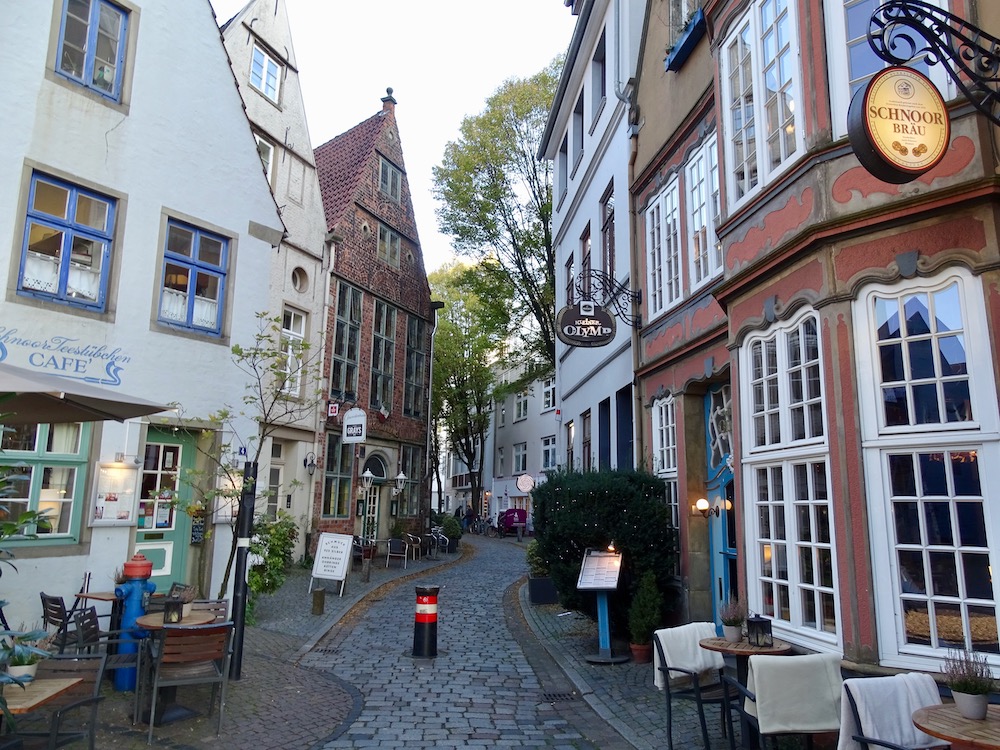
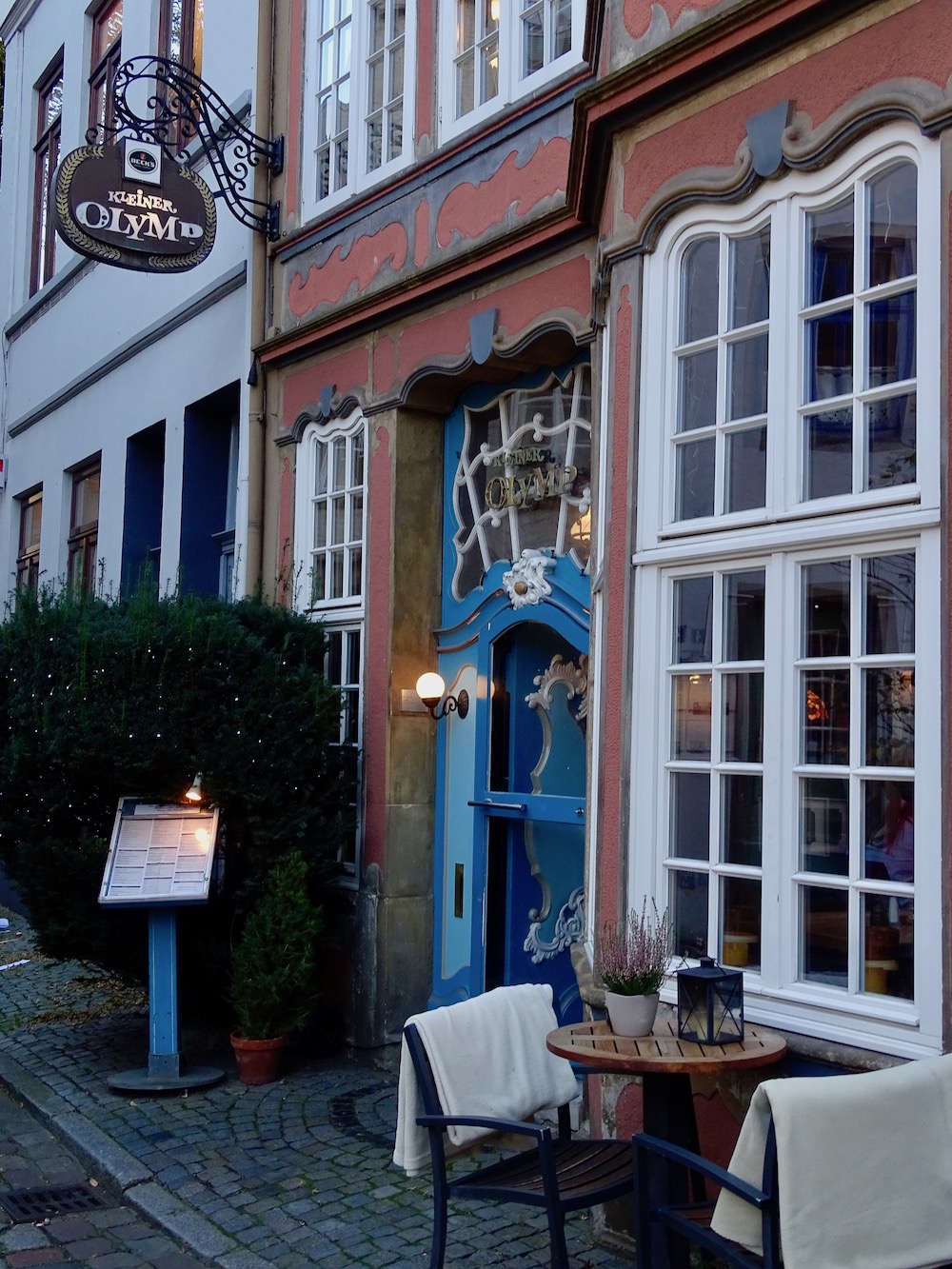

Schnoor was not damaged during World War II, but the neighborhood deteriorated. In 1959 the Bremen Senate decided to invest in rebuilding the neighborhood. Tourists visit to buy handicrafts and souvenirs in stores. There are several cafes and restaurants, Katzen-Cafe which is the most famous.
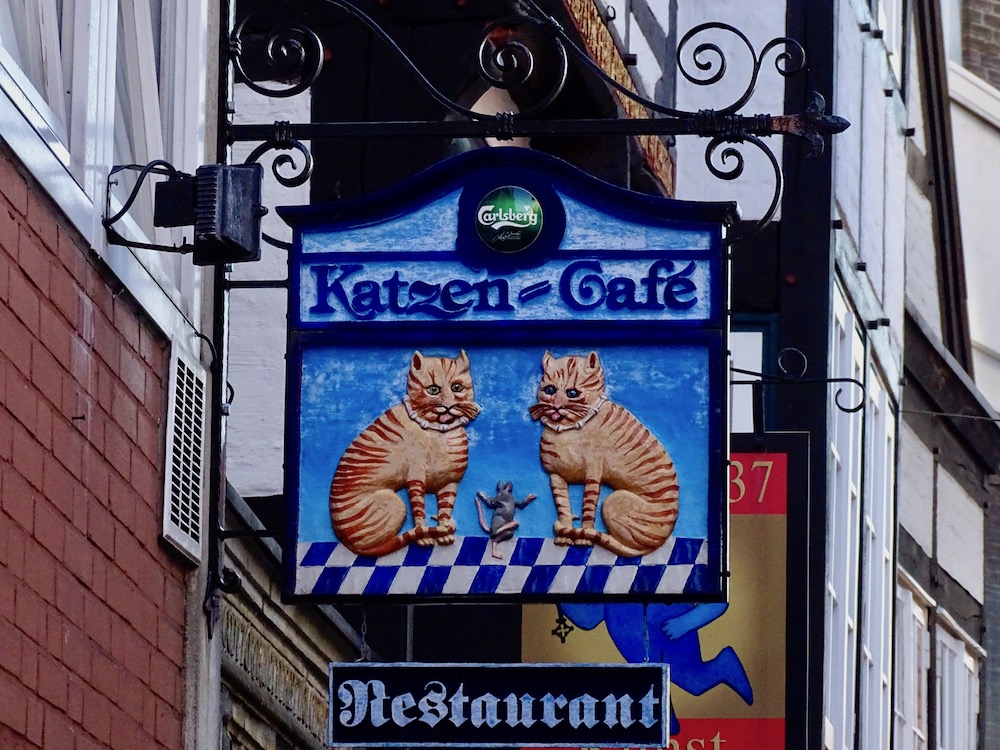
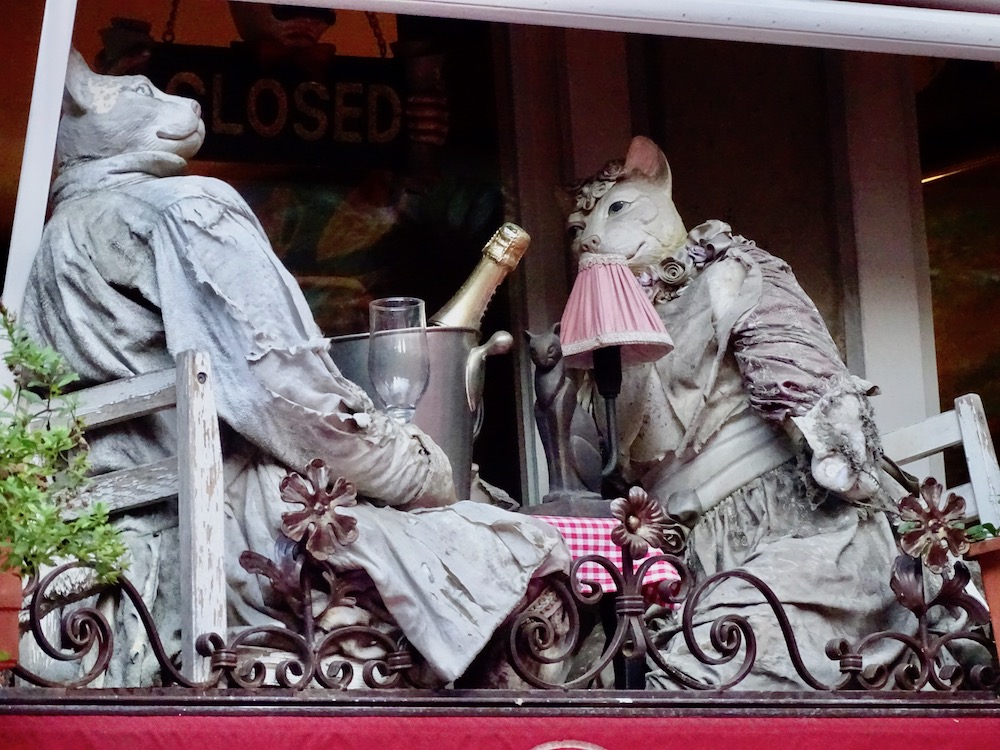
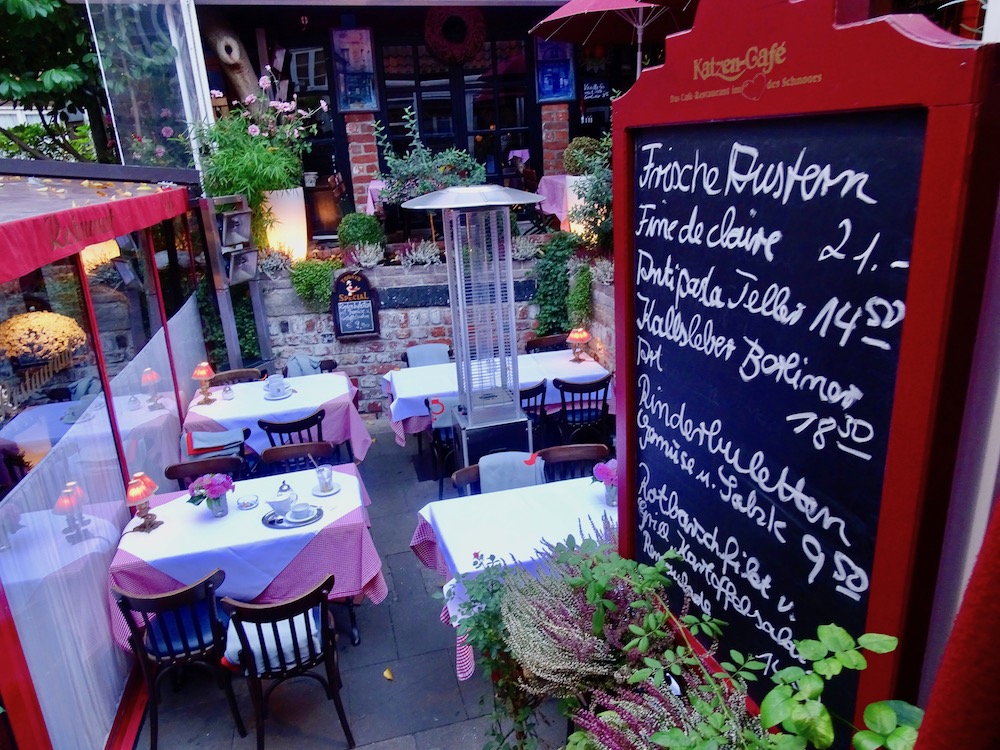
Hochzeitshaus is supposedly the smallest hotel in the world. Its name means wedding house and is designed for honeymoons. In the Middle Ages couples needed where to stay the night before getting married in the Bremen Cathedral.
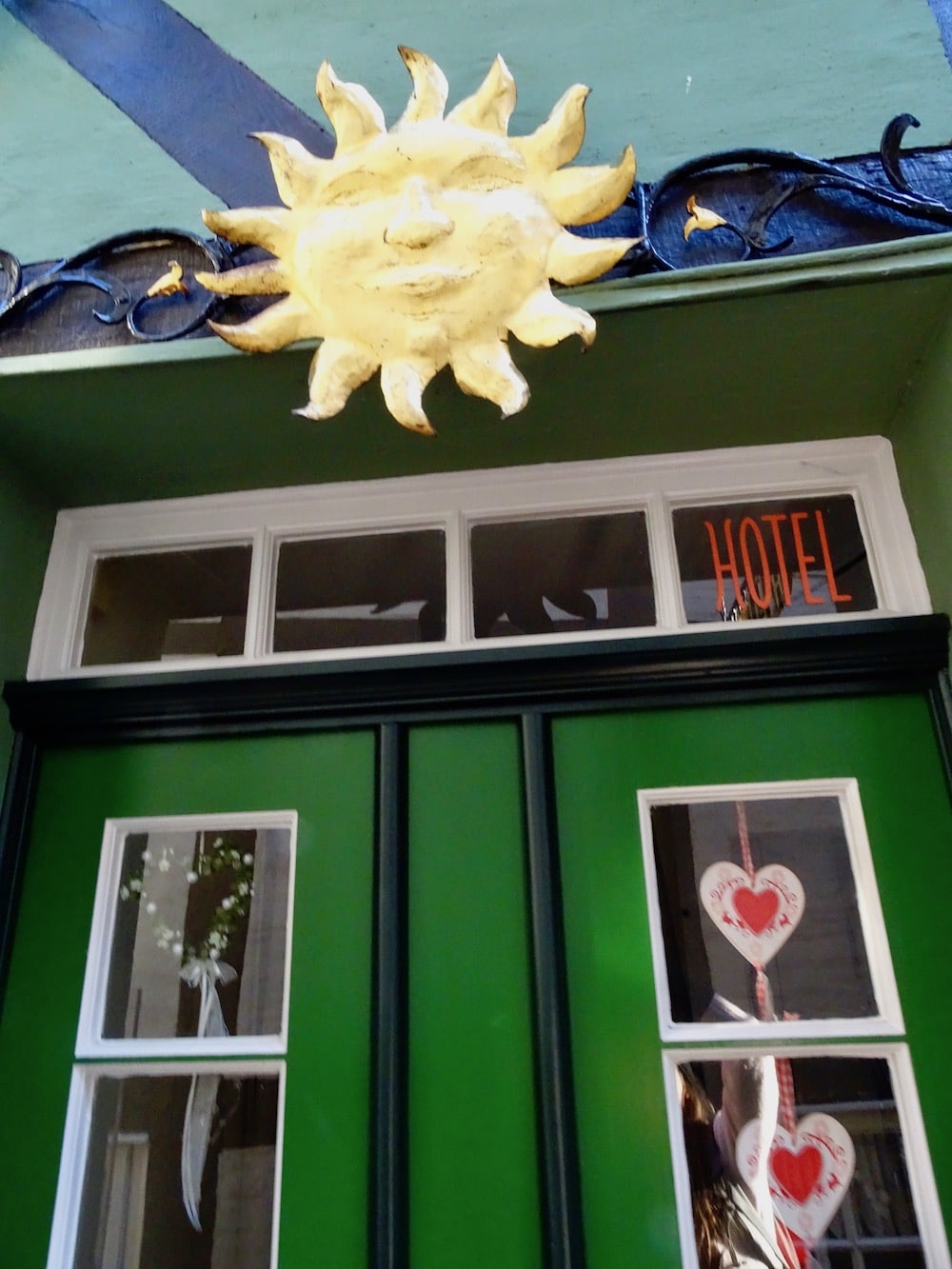
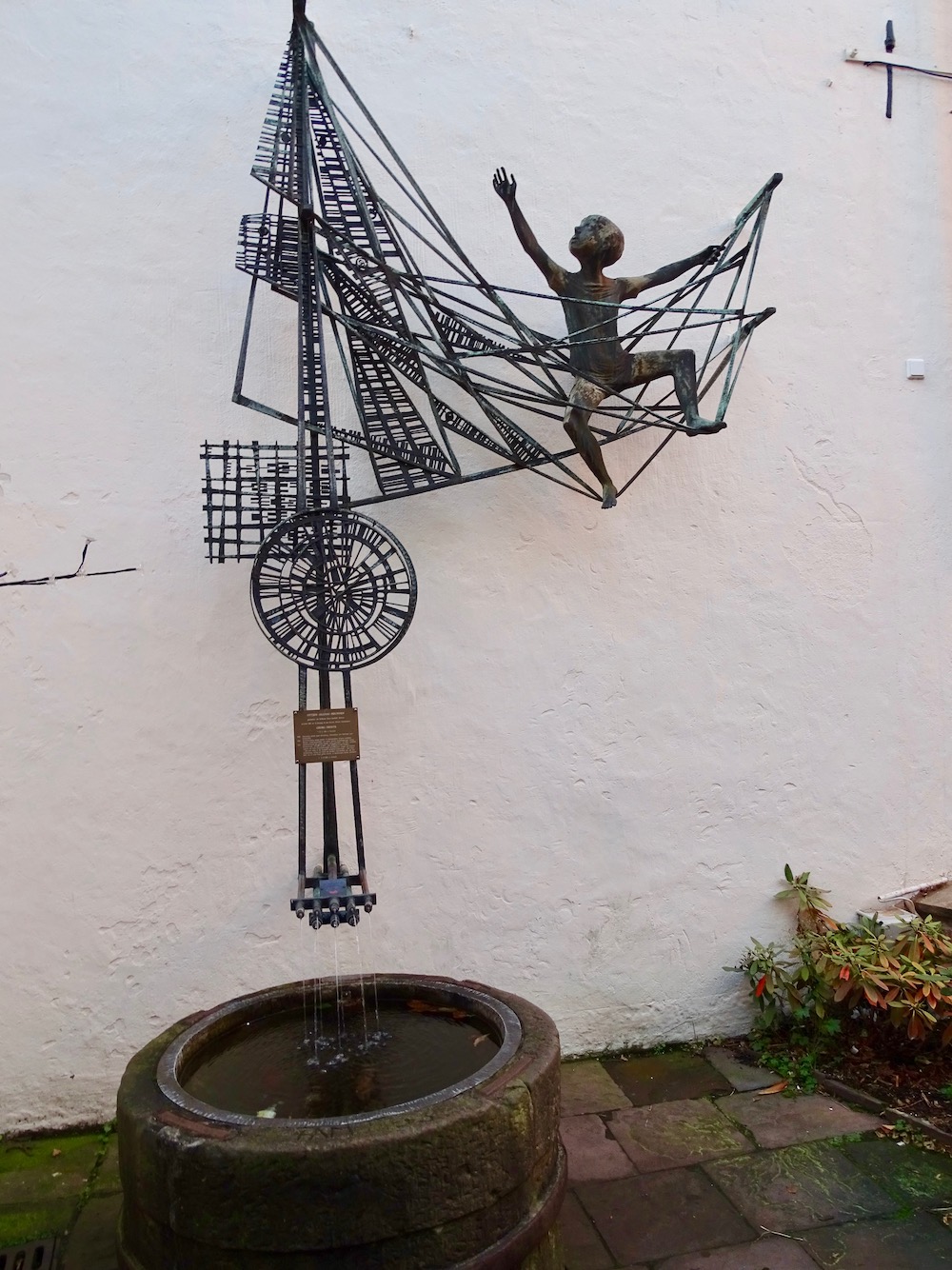

Have you been to Bremen in Germany? I hope my article can help you plan your visit or discover new things to see next time you go.
